As Peter walked around the outside of our house with a broom (taking down all the spider webs) he found an active wasp nest and called me over to see it. I got so excited because we were planning to learn about wasps for some time now. We went to the library and got a few books on wasps. While I waited for my children at the library I skimmed over the book and read “In the aid of a friendly beekeeper who is wearing sting-proof clothing, social wasps can be observed in a box covered with a fine wire mesh, with a small door cut in one end (Sigmud A. Lavine). So a light bulb went on in my head and I gathered my children and we drove to a nearby thrift store. I found a plastic container with holes in it. Peter and I set the container on the floor under the wasp nest and we used a shovel to get the wasp hive down. Luckily for us the wasp nest fell into the container. I quickly closed the container. We had three wasps that had already emerged from the cells. We then gathered all the things we had related to wasps. Peter read to us while we listened and observed the wasps.
We kept the wasps for less than a week and eight more wasps had emerged from their cells during that time. Then when we were done we let them out. Now, I’m no beekeeper. My dad actually is but I’m partly brave and crazy. When the wasps emerge from the cells they are not very active. They don’t even make that “buzzing sound” until a few days.
In this post I’ll share how I put together our unit studies. We love unit studies. I often get asked where I get my unit study or how ahead do I plan out our unit studies so I want to cover that in this post.
I put together our unit studies. I don’t like text books. Growing up text books made no sense to me and they confused me. I also love the whole process of putting together a unit study because they are always different and it feels like I’m putting together mystery pieces. If you and your children love learning and getting excited about the next piece of information then you’ll love unit studies but if you like someone else putting it all together for you then you might want to buy a unit study already prepared. I’ve never even seen prepared unit studies so I can’t recommend anything.
My children and I have lists of things we want to know more about. We usually plan 1 to 2 weeks ahead. If I need to order things for our unit study then I’ll plan two weeks ahead.
Drawing and Learning about Wasps
My two sweet nephews came to stay with us for four nights and we included them in our wasp lesson as well as everything else we did. We usually always start our Unit Studies with watching some educational videos on YouTube or watching a video on how to draw what we are learning. This is one my favorite part of the unit study because it is very relaxed. Two of my children like watching the step by step drawing videos we do and the other two don’t. What I usually do is print out lots of pictures of our topic and let them choose. Also, oftentimes the art videos don’t have a person speaking so I’ll turn the volume down on the art video and let them listen to a video about wasps or I’ll read to them.
Candle Making
A week before doing our wasp unit we went to an Gold Mining town that taught us how to make our own candles. It was so fun to do. We placed flowers on our candles during that event but I thought we could place wasp nest pieces on our candle. Now I know candles don’t have anything to do with wasps but I thought it would be fun to do at home.
For this project you only need 4 ingredients. You need pieces of an wasp hive, wax, and candle wick, and stick. You want to place candle wax into a pot that you don’t care about. This activity is best done outside because it does get messy. Once the candle wax has melted you can start the process. You need another bowl with cold water. Tie a piece of candle wick unto the stick. Place the candle wick in the candle wax and then in the cold water. You want to repeat this process many times. with every time your candle will get thicker. When your done, place your candle in warm wax then apply the wasp nest pieces and place the candle back onto the warm wax.
If you want to get your children tired and it is too hot to go outside than make candles. We laughed so hard because they had to go around that table over 50 times and towards the end they got so creative. They lined the chairs and while they waited for their turn they sat.
English : Gall Ink
Have you ever seen round, light brown/black balls growing from an oak tree? We’ve seen so many on trails. We even have an oak tree in our yard but we had no idea what it was. Well it turns out that galls grow when apple gall wasps lays an egg in an actively growing part of the oak tree. The tree reacts by growing galls when the wasps inject a hormone into the plant tissue. This abnormal growth helps the tree enclose the developing wasp larvae. The young wasp lives inside the gall. The gall provides shelter and food for the wasp. When the wasp is an adult it comes out of the gall. Then the gall becomes dark and falls off the tree.
There are many insects that do the same thing as the apple gall wasp. There are also many different looking galls. YES…we plan to do a unit study one day just on galls because it’s so fascinating.
It so happens that you could use the oak galls. We made ink by combining oak galls, ferrous sulphate, and gum Arabic together. We first crushed the dark oak galls into small pieces. We covered them with water and left it overnight. Then the next morning we drained the water. Then we added ferrous sulphate and gum Arabic together and mixed it until the gum Arabic dissolved. We found mixtures online that did the measurements by weight. They used 2 ounce of oak galls, 1 ounce of ferrous sulphate, and 1/2 an ounce of gum Arabic.
We received a beautiful calligraphy pen from Online.
My dress is from Lindy Boop.
So the way I came to knowing about Gall ink was I spent some time looking for ideas about wasps while everyone was sleeping. I went on etsy.com to see if I could buy some wasps and so on. This was before Peter found the wasp nest. When I was looking for wasps I came across wasp gall. Someone was selling galls on etsy.com. I got really curious to what gall wasps has to do with wasps. I looked online what gall wasps were and then I looked what I could do with them and that was when I found that we could make gall ink.
Wasp Embroidery
For the last two units Elizabeth had embroidered what we have been learning. I’ve been wanting to learn it myself for some time now so I decided it would be a great opportunity for Elizabeth to teach me something new. We bought everything we needed and got started. We actually drew the wasp onto the towel and then just stitched away. Many have asked how Elizabeth who is only eight got into embroidery. Well, her sweet aunt Anna introduced her to it. They watched some YouTube videos (thank you YouTube) and when she came home from her aunts house she has continued to stitch. I plan on making something new each week with her.
Wasp History
For wasp history we looked up what the largest wasp was and where the largest wasp nest has been found. It turns out the Asian giant hornet is the largest wasp. They are native to the mountains of Japan. They grow up to 2.2 inches long and their sting is about 0.25 inches long. Their venom is so powerful. Each year people die. There venom is said to be strong enough to dissolve human tissue. We watched some National Geographic and other videos online and the result of their sting is pretty awful.
The largest wasp was recorded and found on a farm at Waimaukau, New Zealand. The wasp nest was 12 ft 2 inches long. It was found on April 1963.
Wasp Math
I got a big poster board and drew hexagons onto the paper. I added multiplication facts in every one of them. My kids threw a wasp nest onto the paper without looking. They then had 10 seconds to answer the multiplication facts. Elizabeth and Eve had as much time as they needed.
Wasp Science
The life cycle of an insect is always so fascinating. We dyed paper using coffee. To do this all you need is coffee, a tray (big enough to fit your paper), and paper. You want to boil hot water first. Add the coffee to the boiling water and let it cool. Pour the coffee into the tray. Place the paper into the tray filled with coffee and leave your paper in the coffee for 15 minutes. Turn your oven on to 200 F. We have a tray with round holes so we placed our paper on that tray and we put it in the oven for 15 minutes. Once the paper was dry it looked like a wasp hive.
We then learned all about the wasp cycle. One of the neatest life cycles is that of the fig wasp. After learning about the fig cycle we went to the store and bought figs to see if there was a dead wasp inside or any larvae but there was none. Most of the store bought figs do don’t have a wasp in them but I think we will never look at a fig the same. Check out the video below.
Thank you for reading our post. We share a new post every Thursday at 8pm.

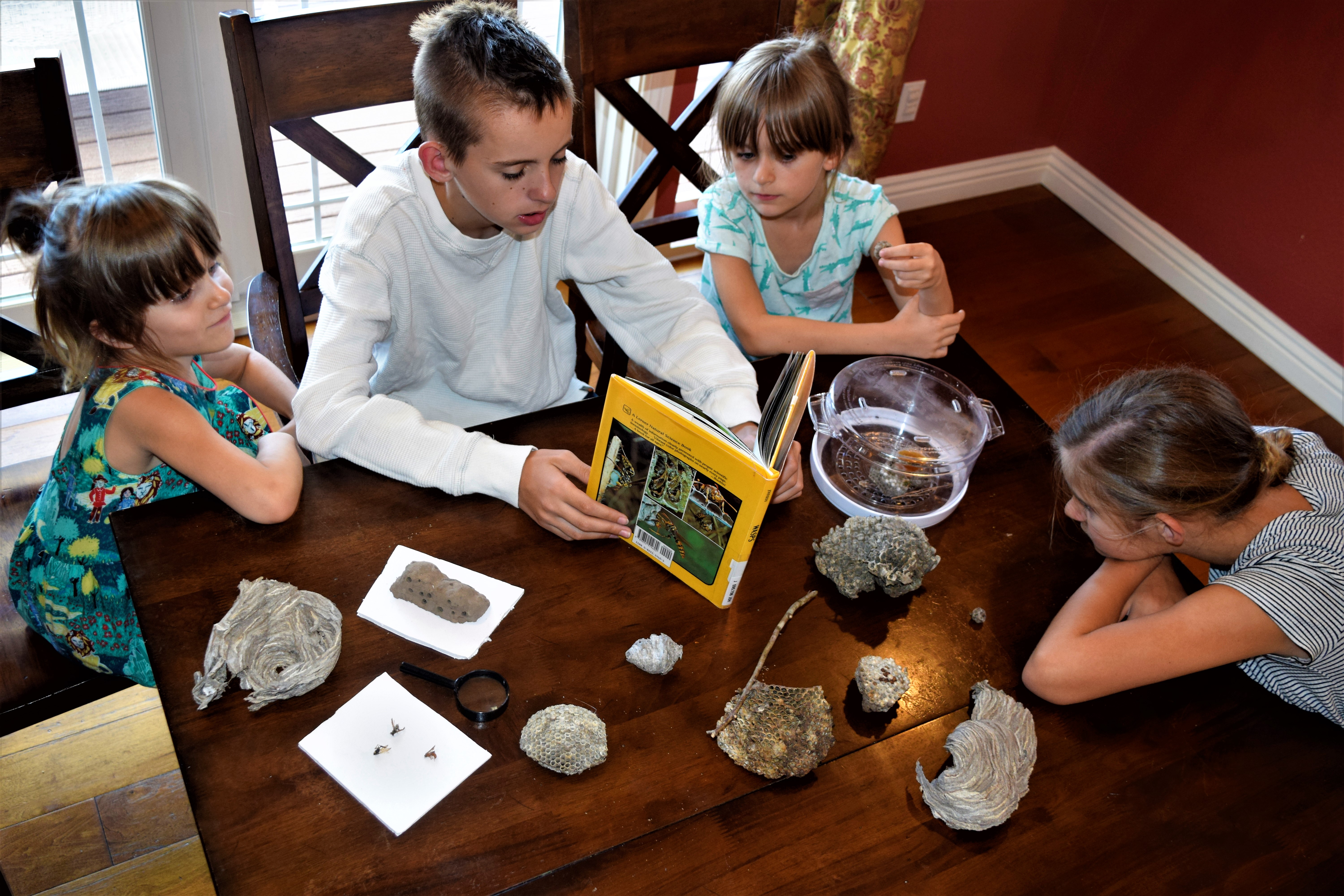
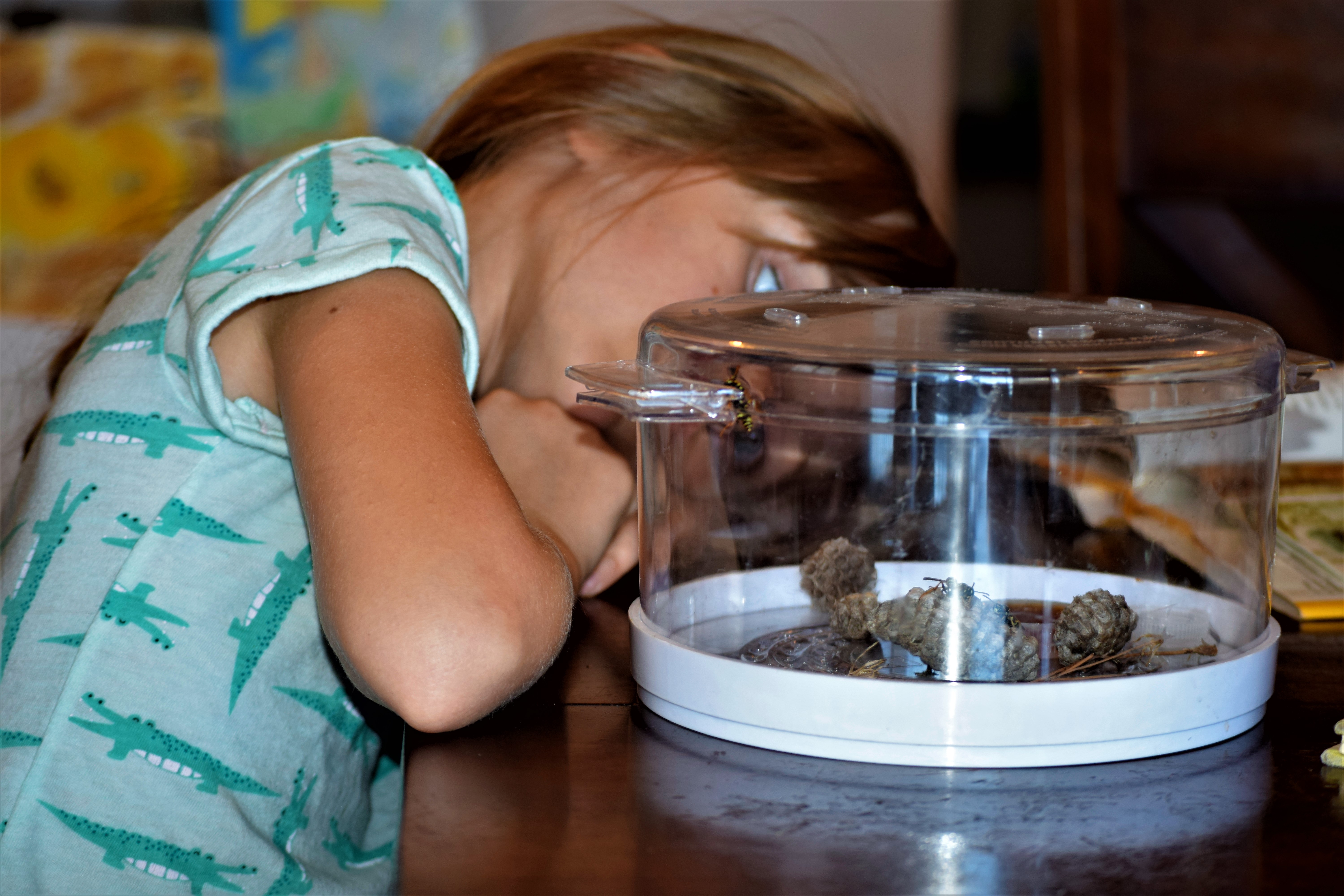
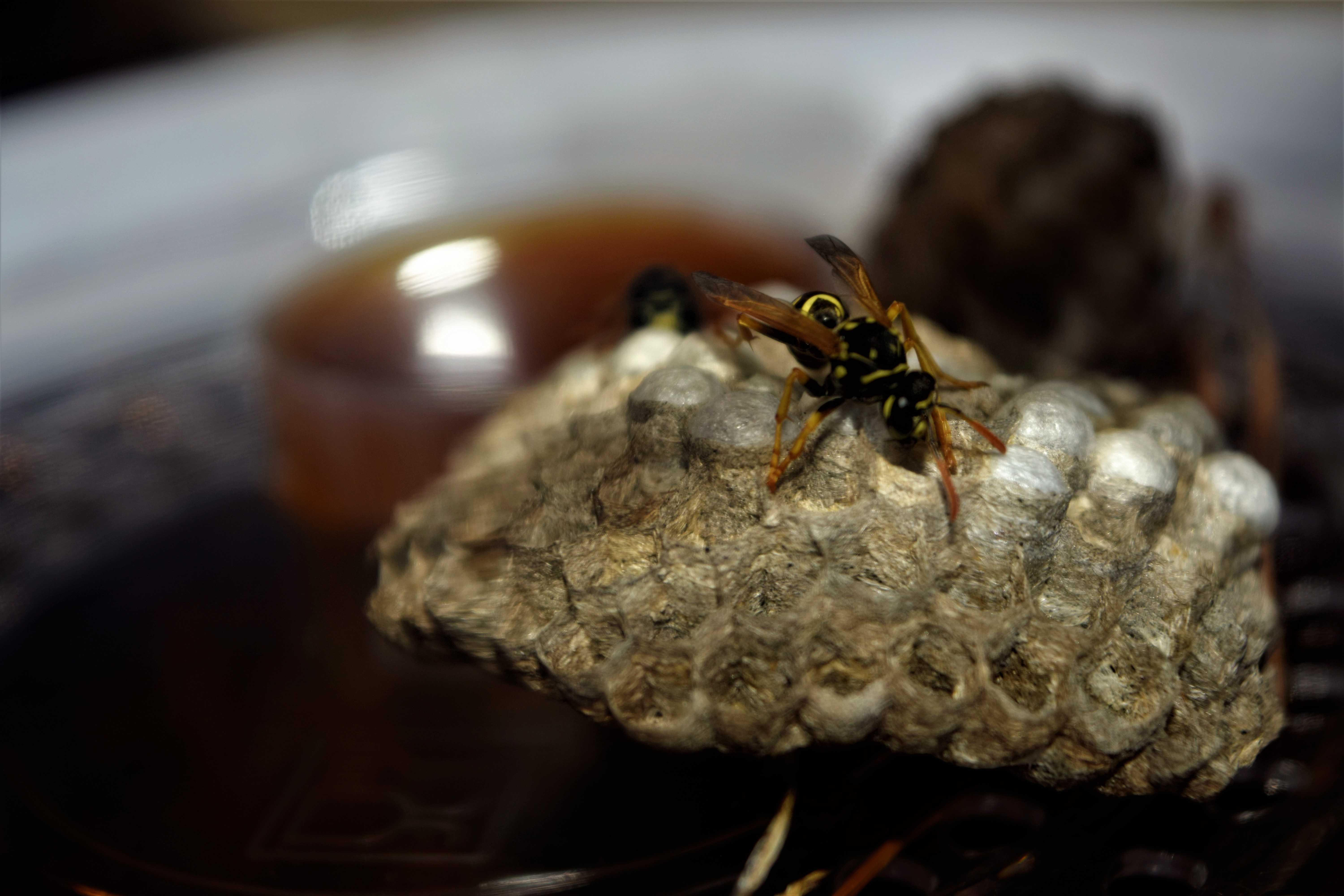
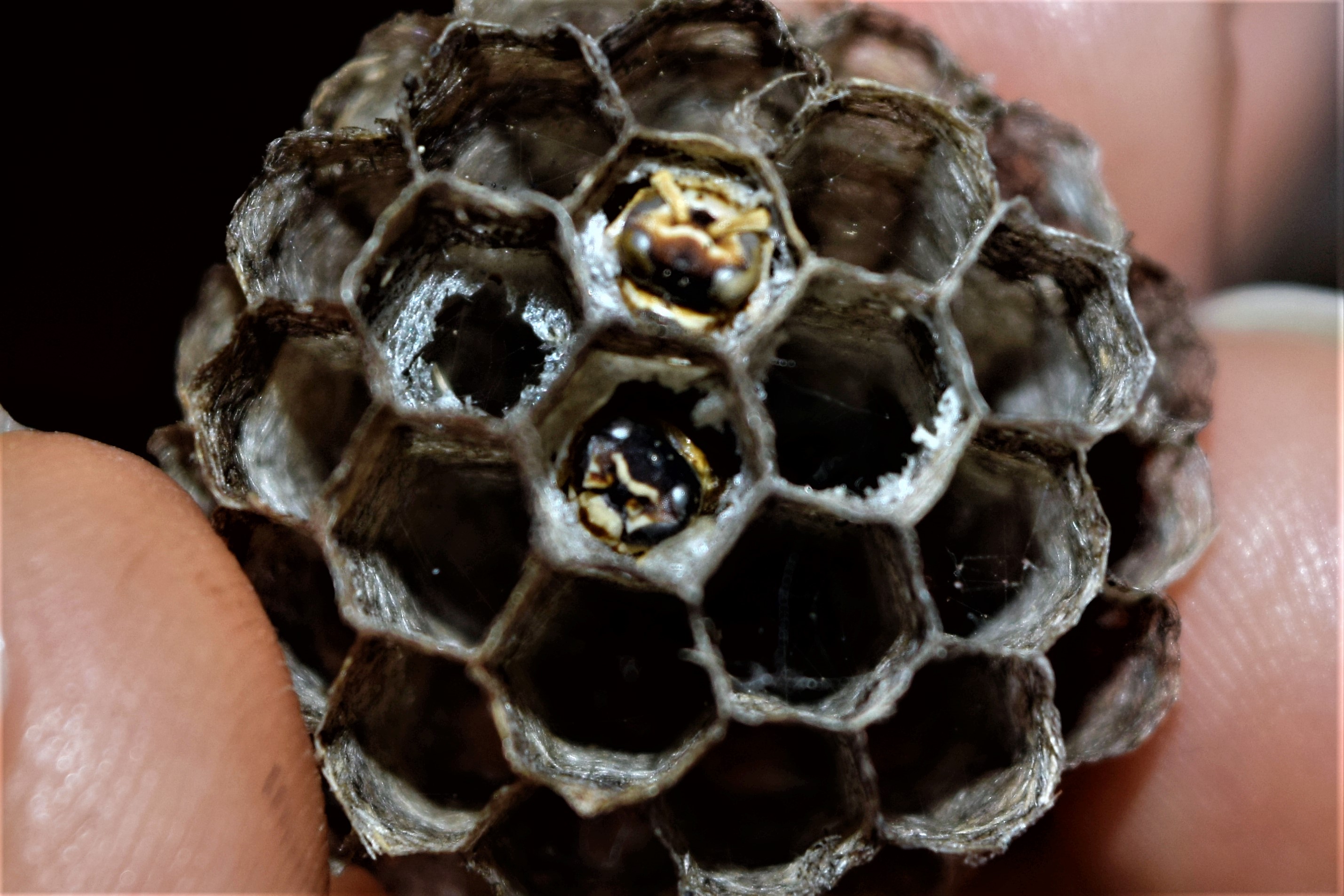
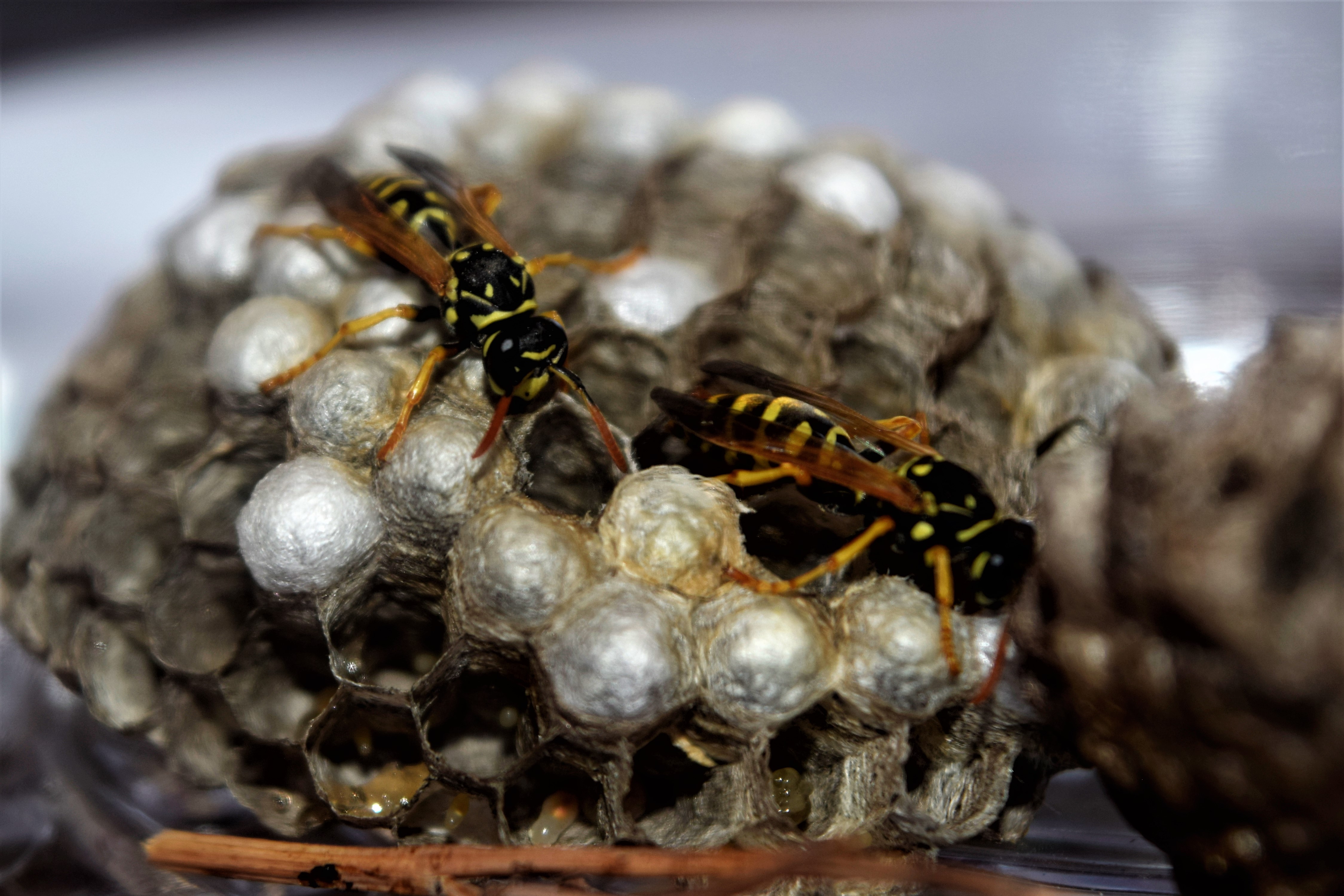
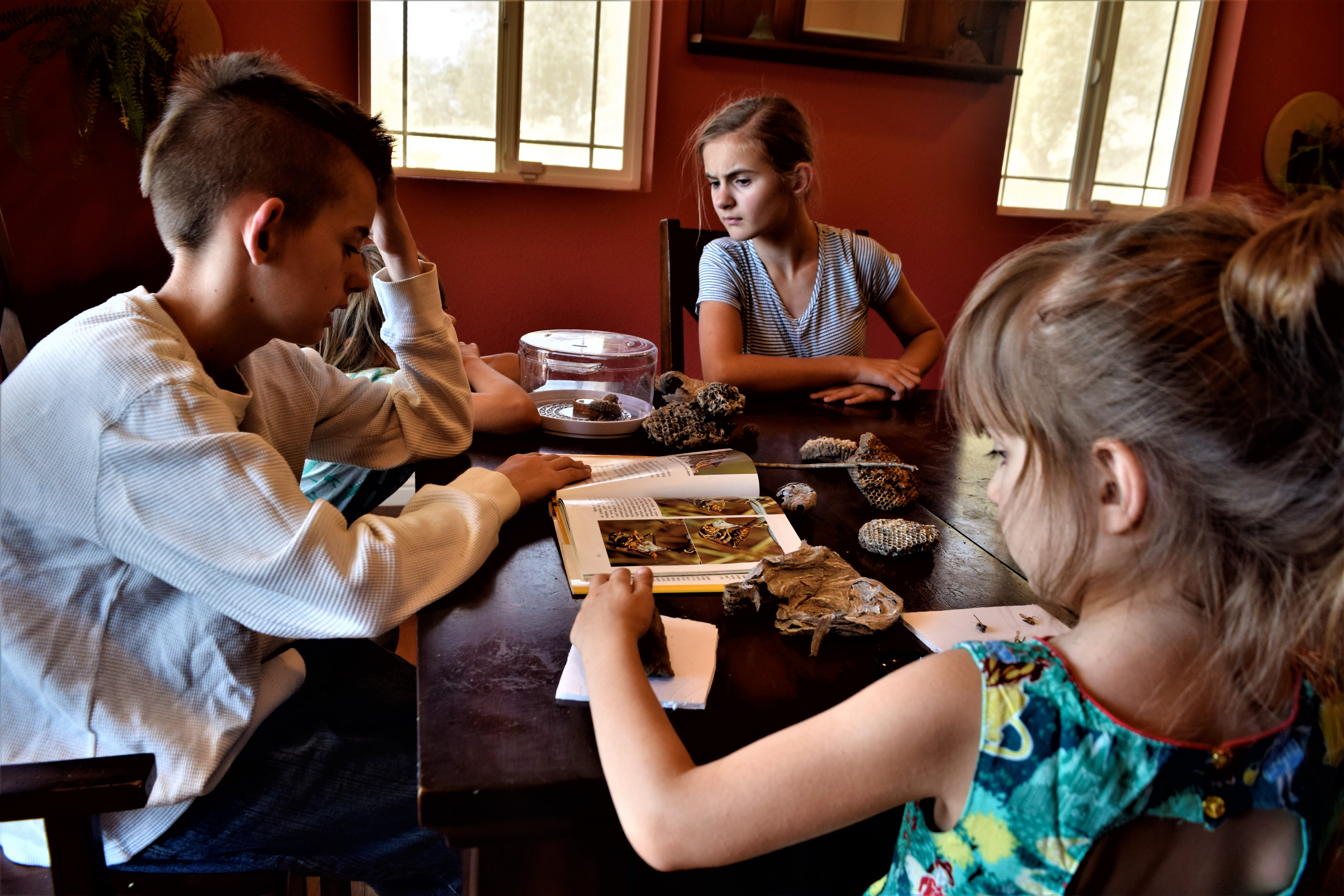
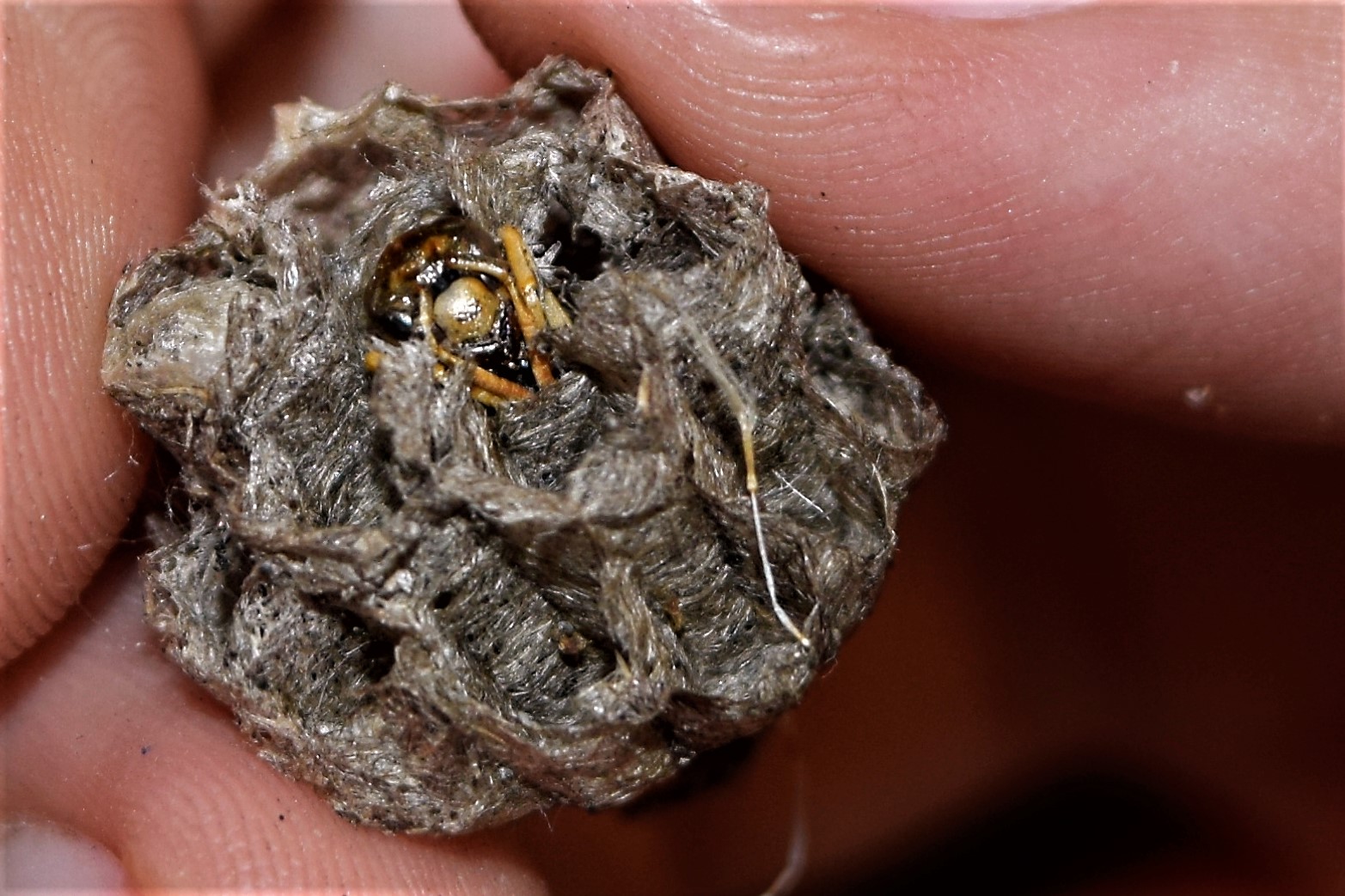
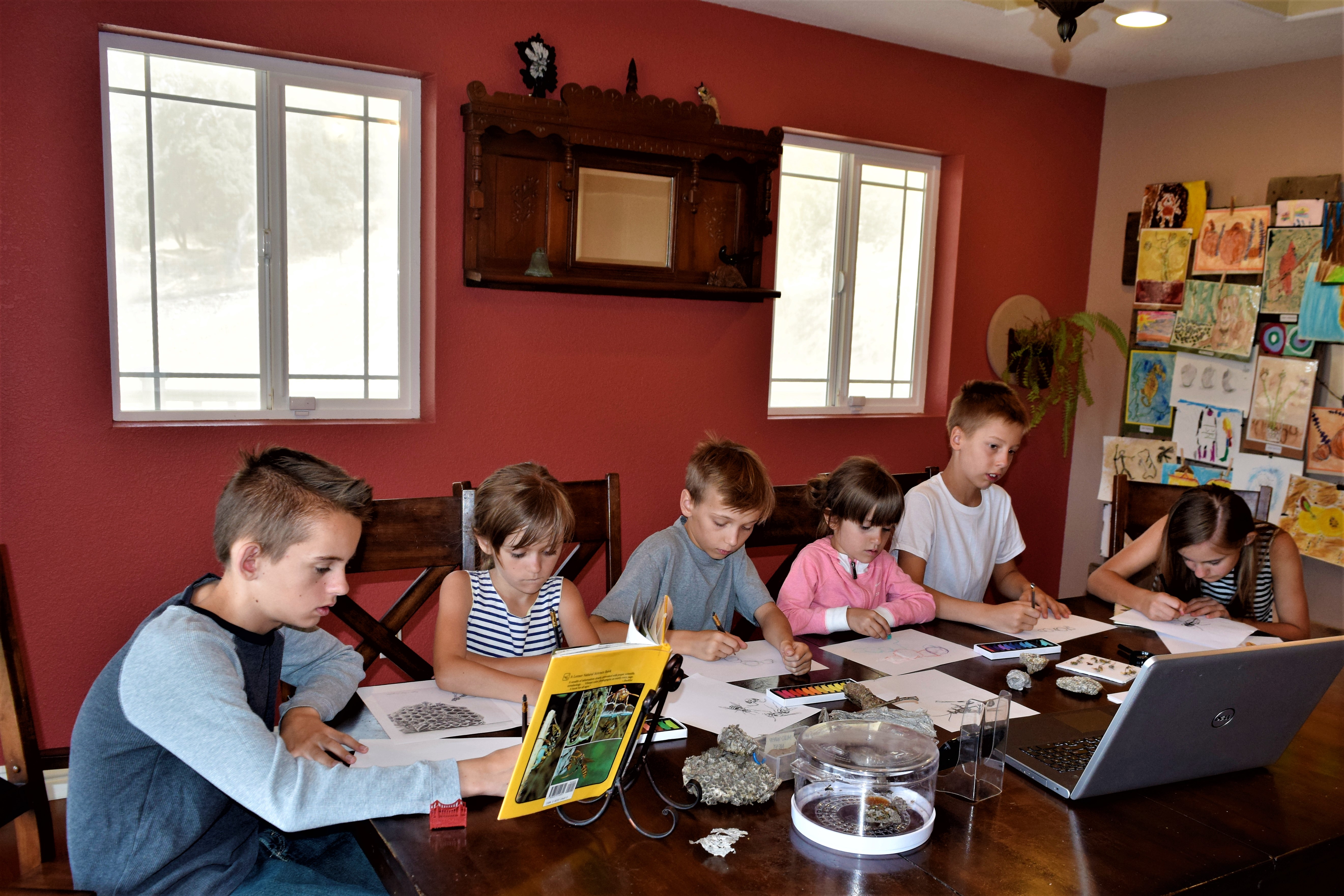

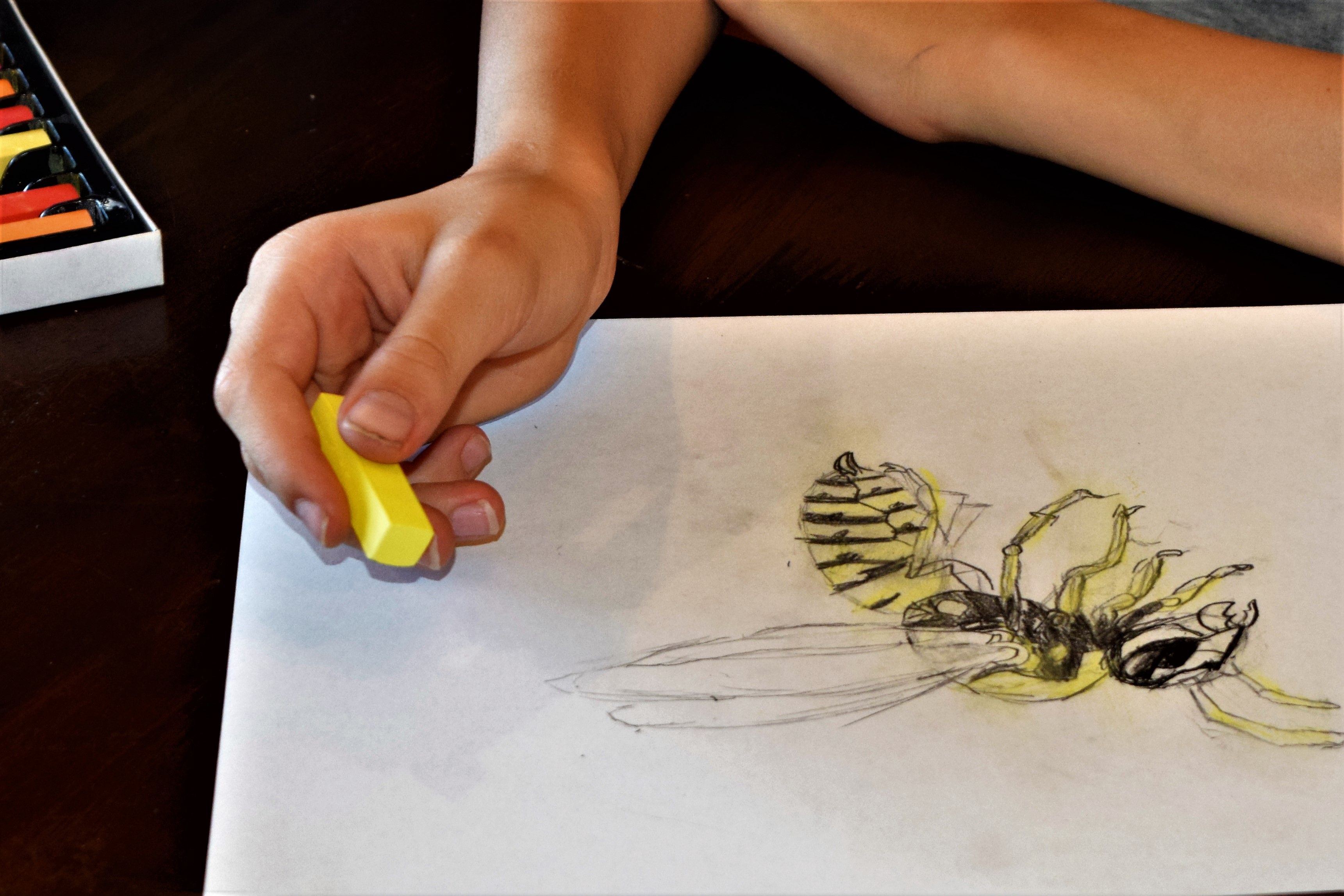
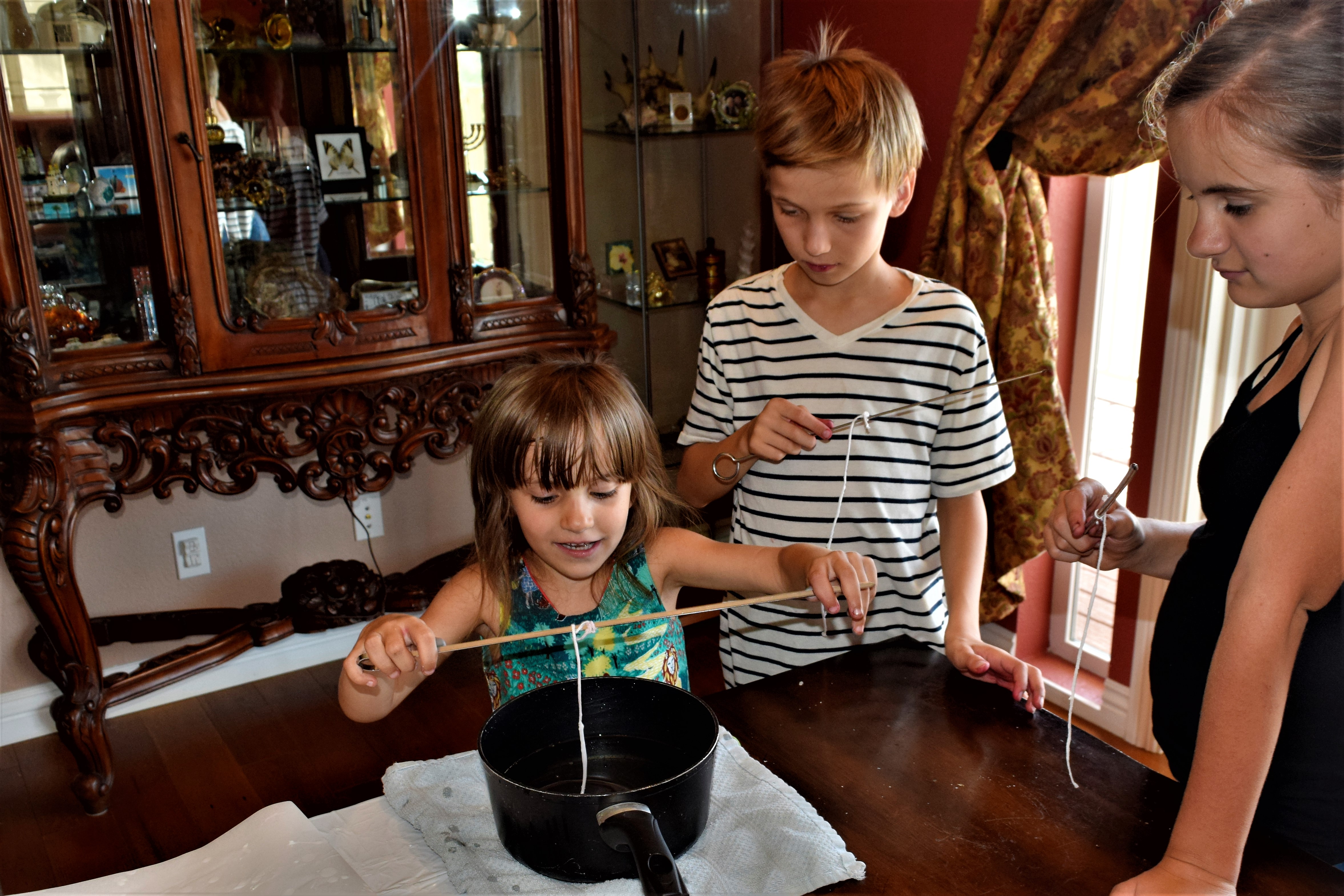
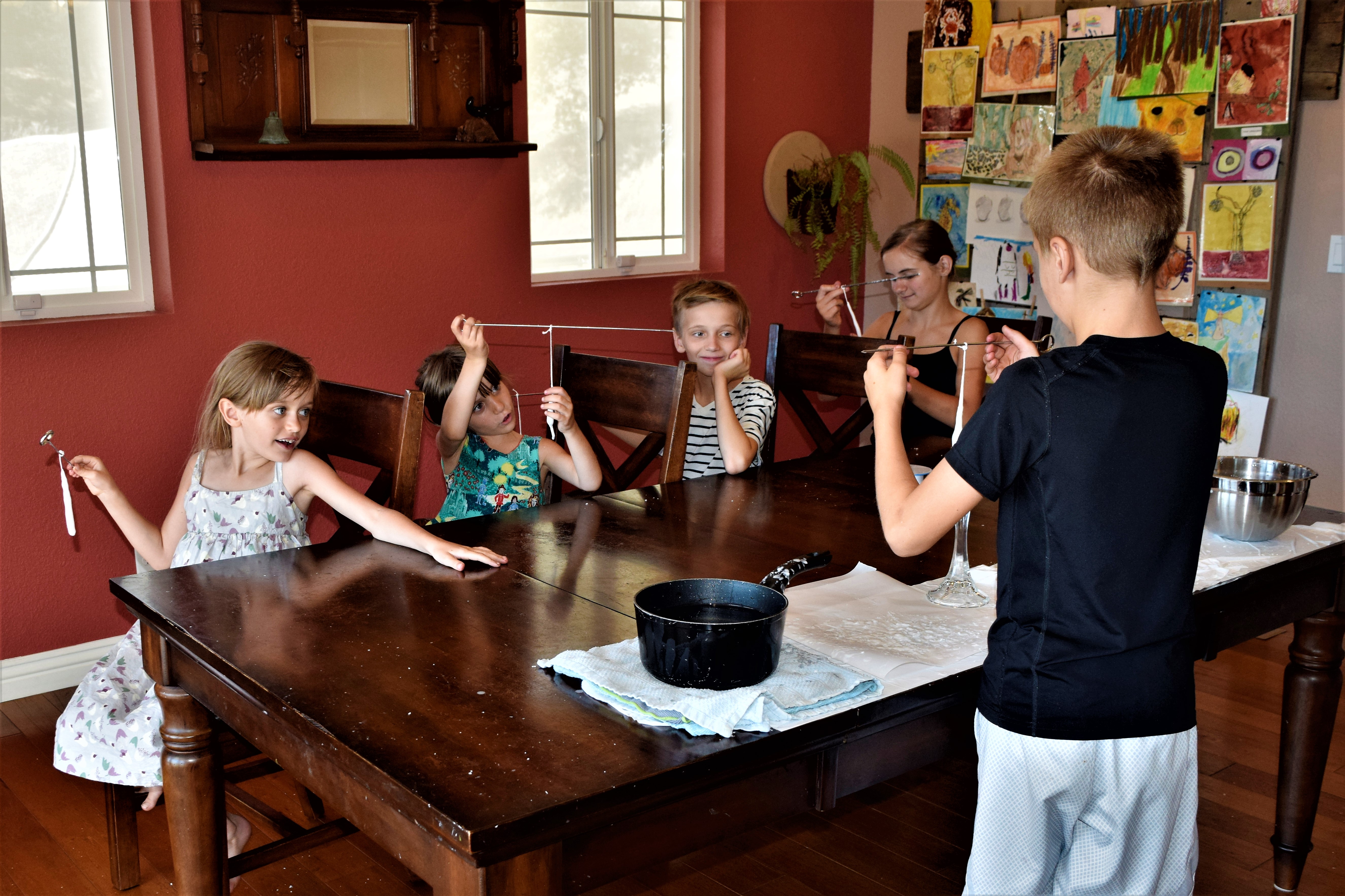
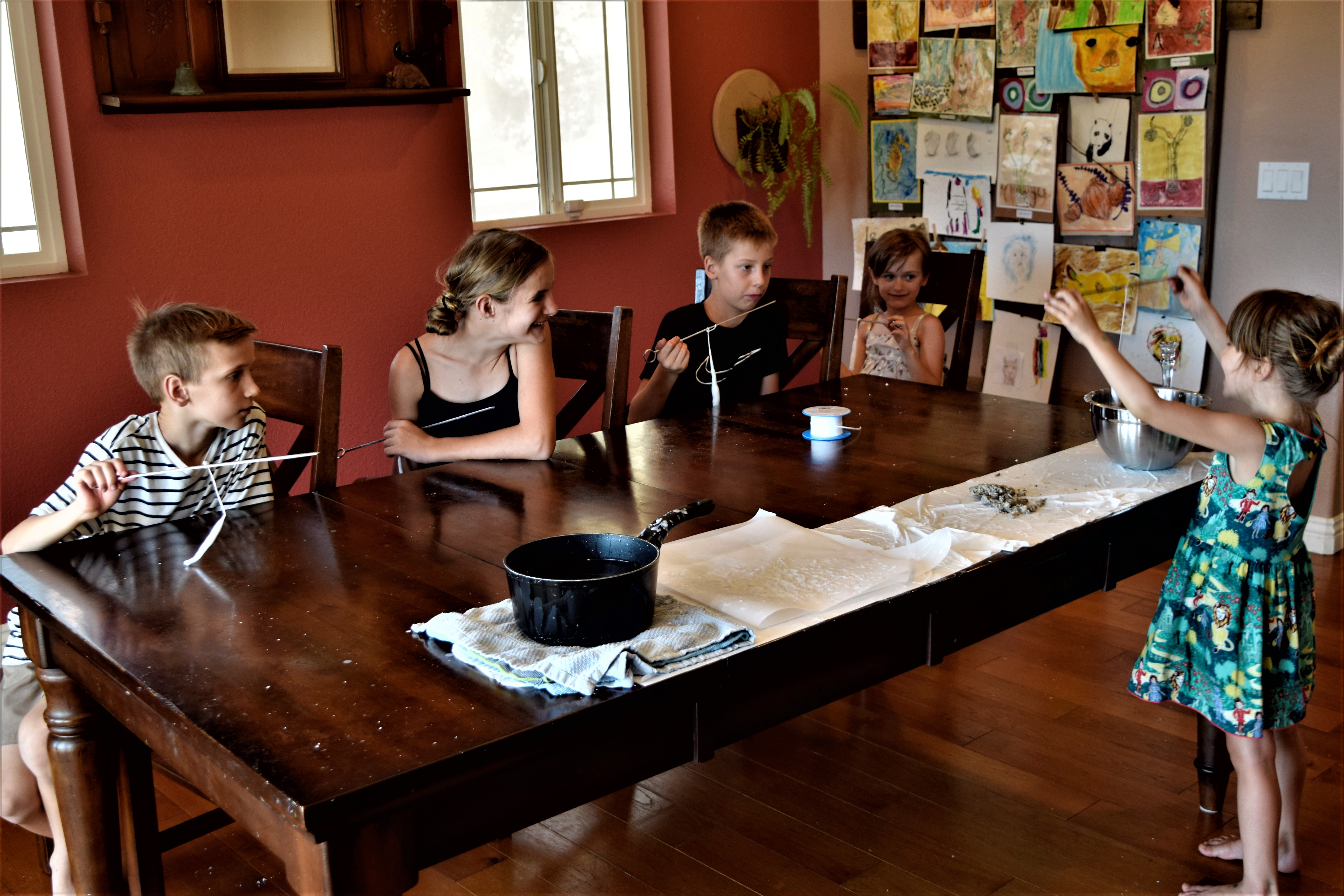
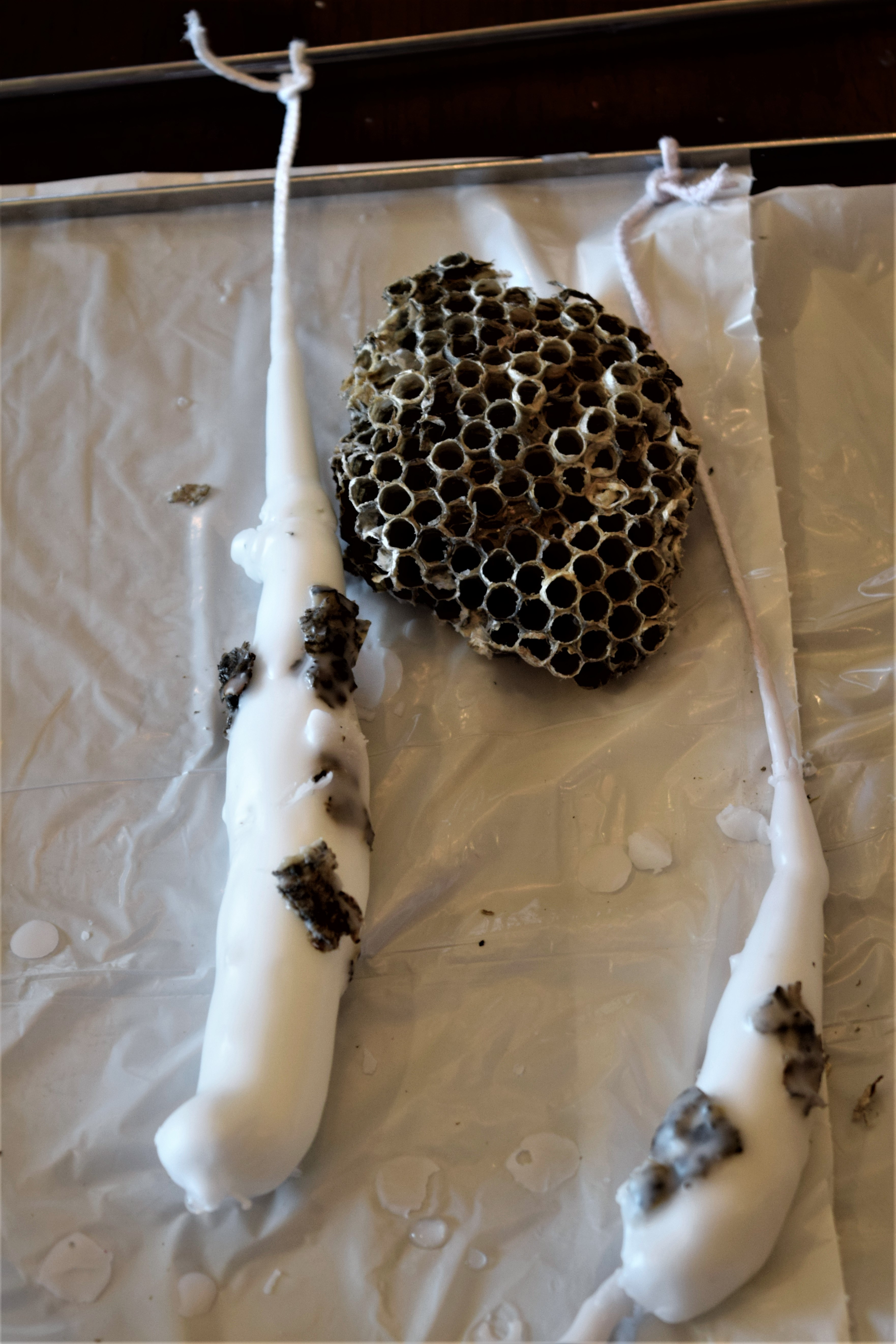
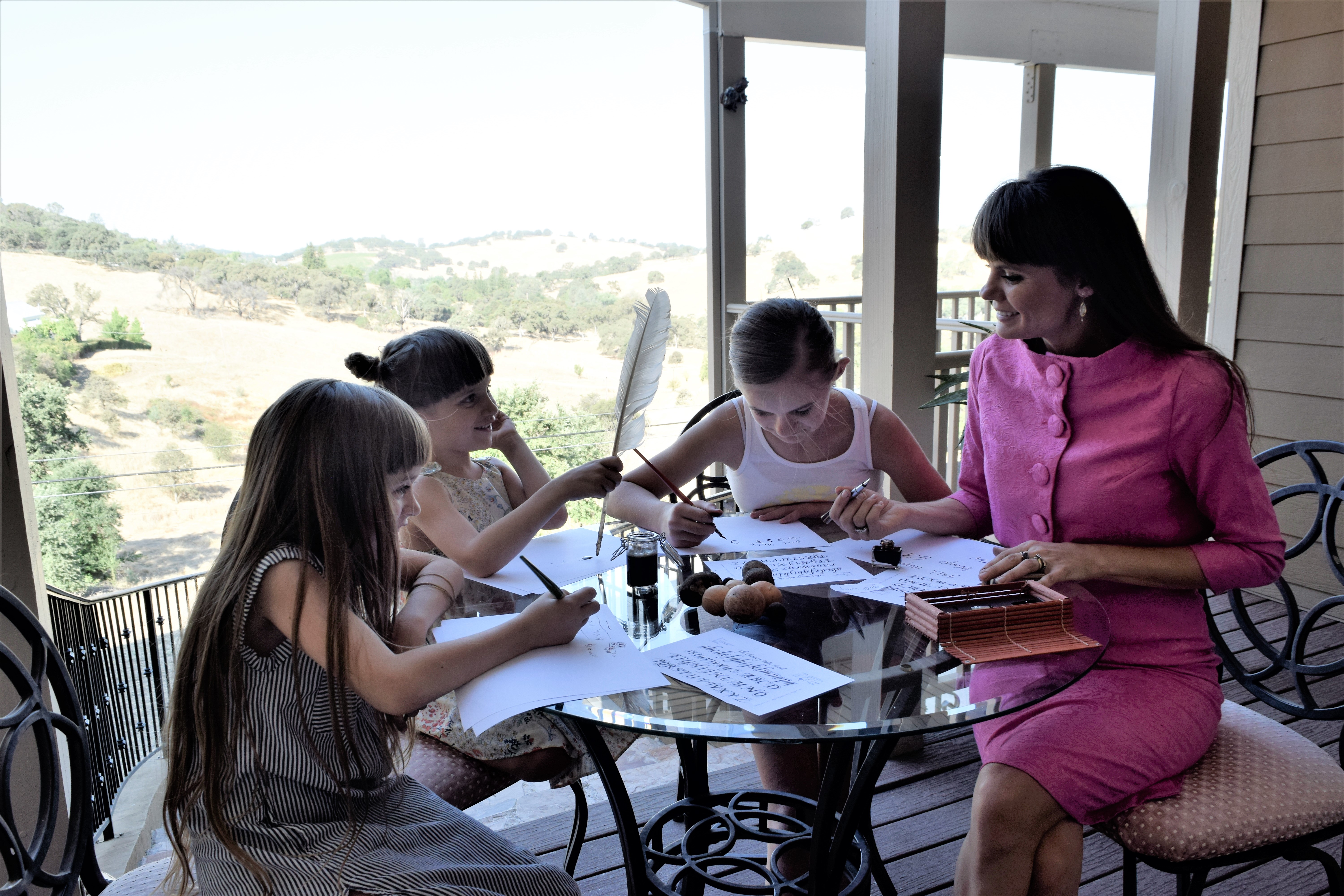
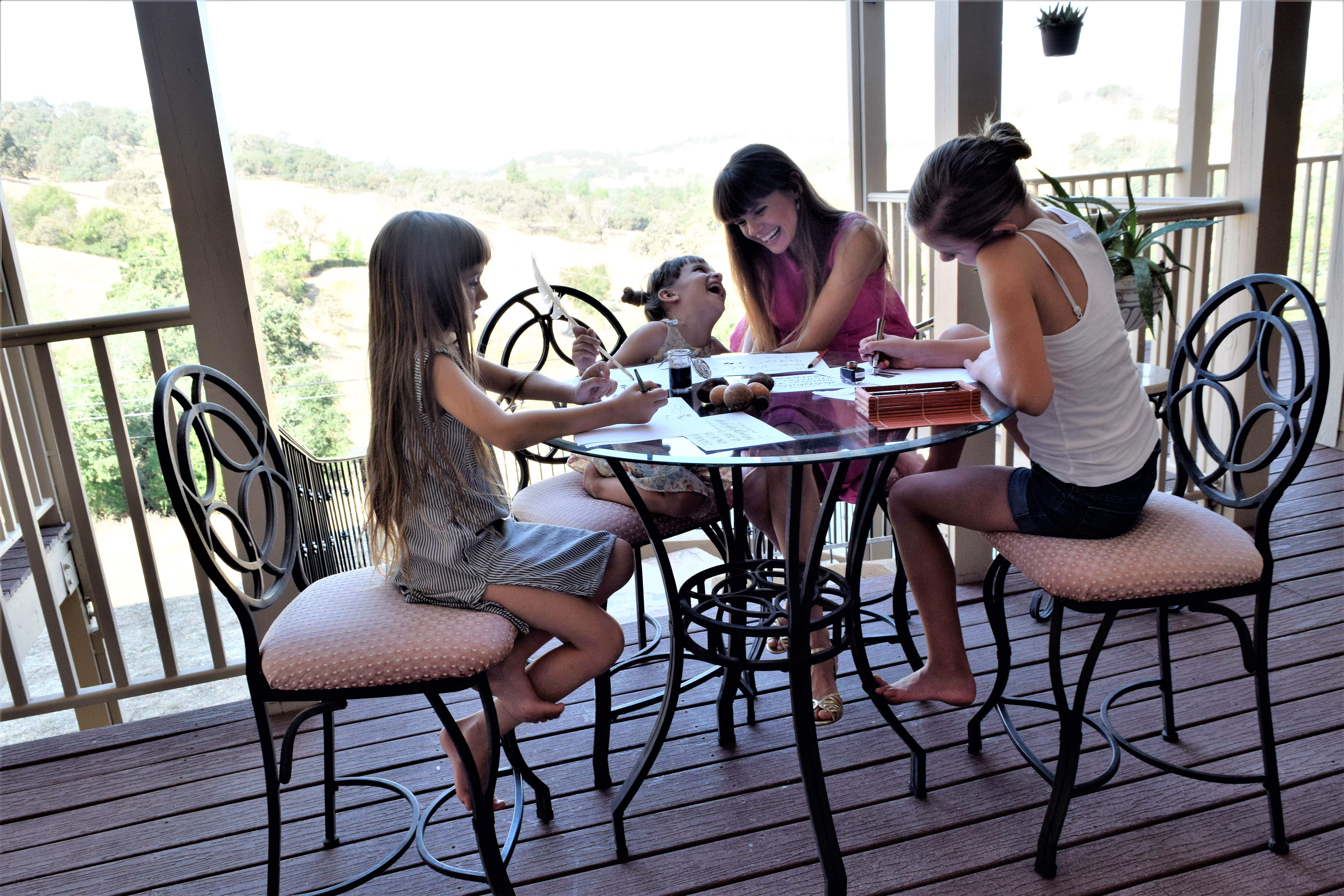
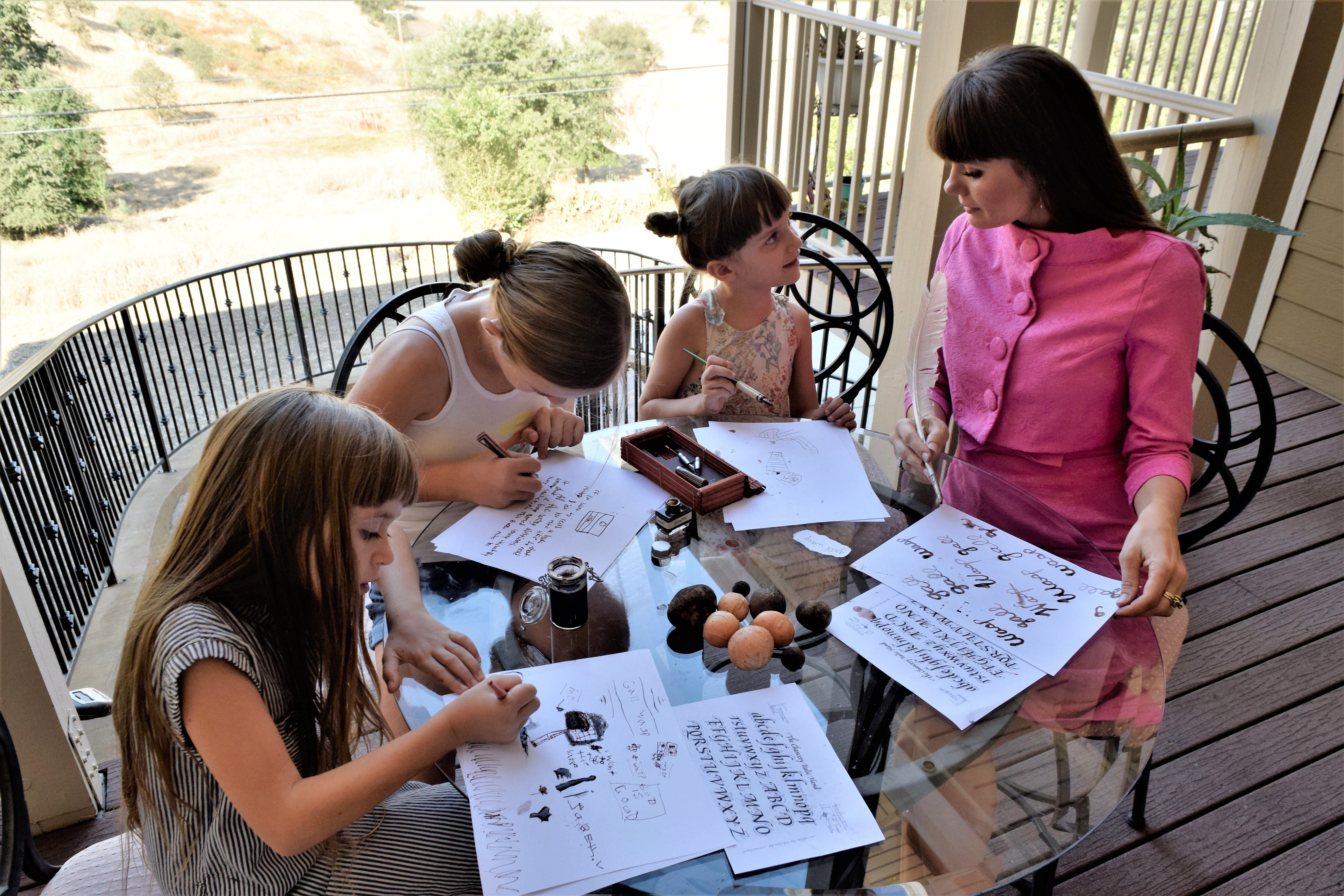
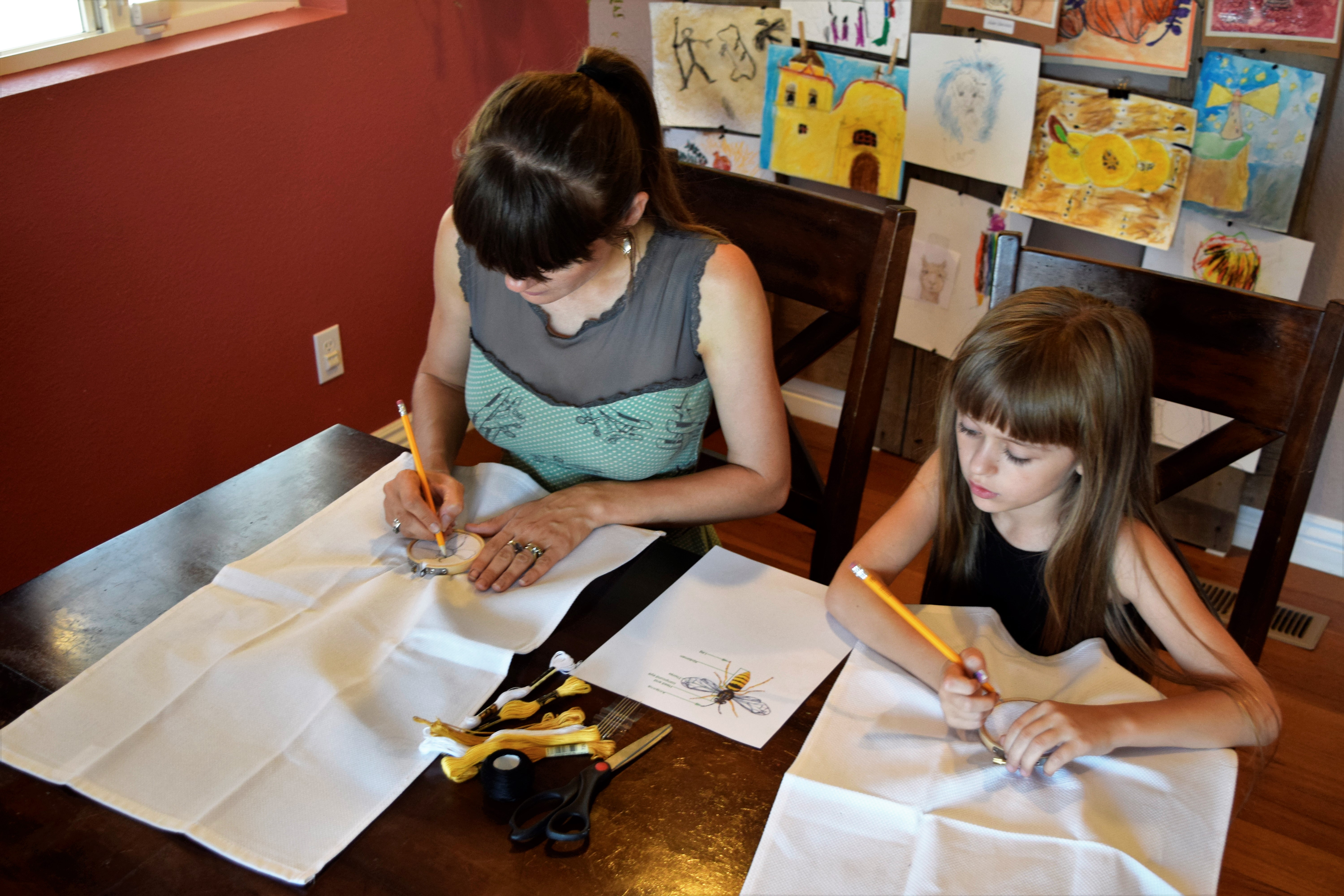
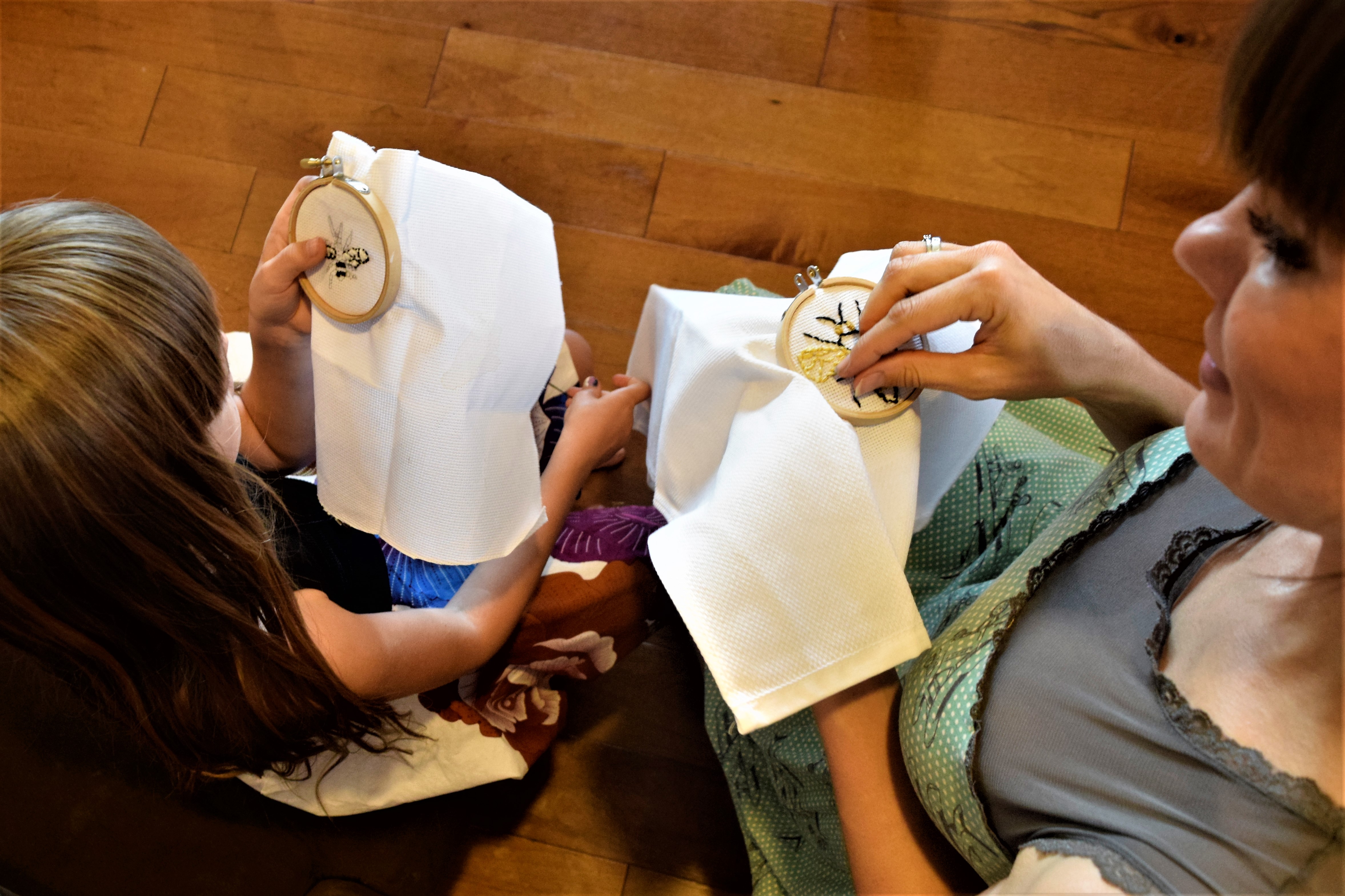
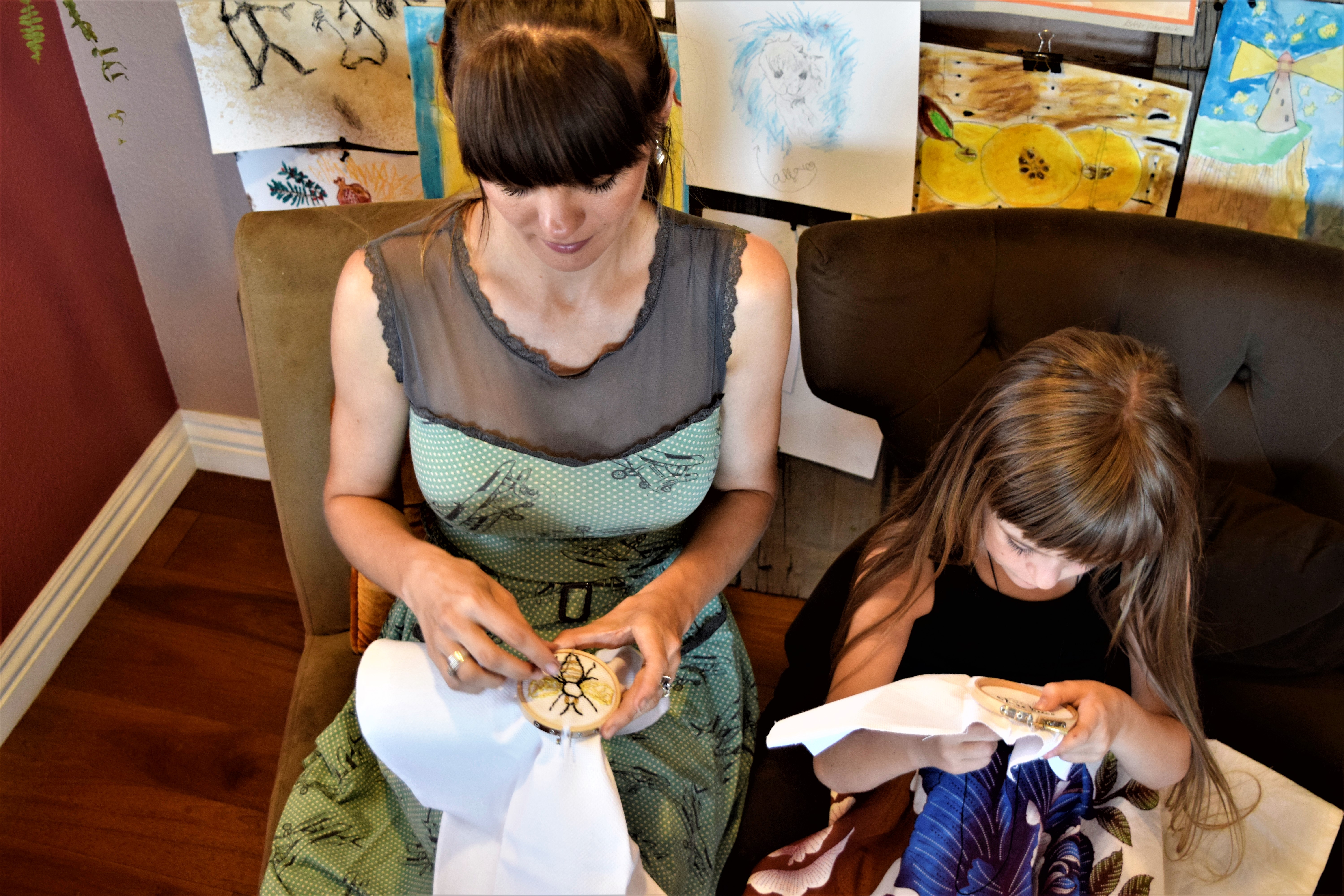
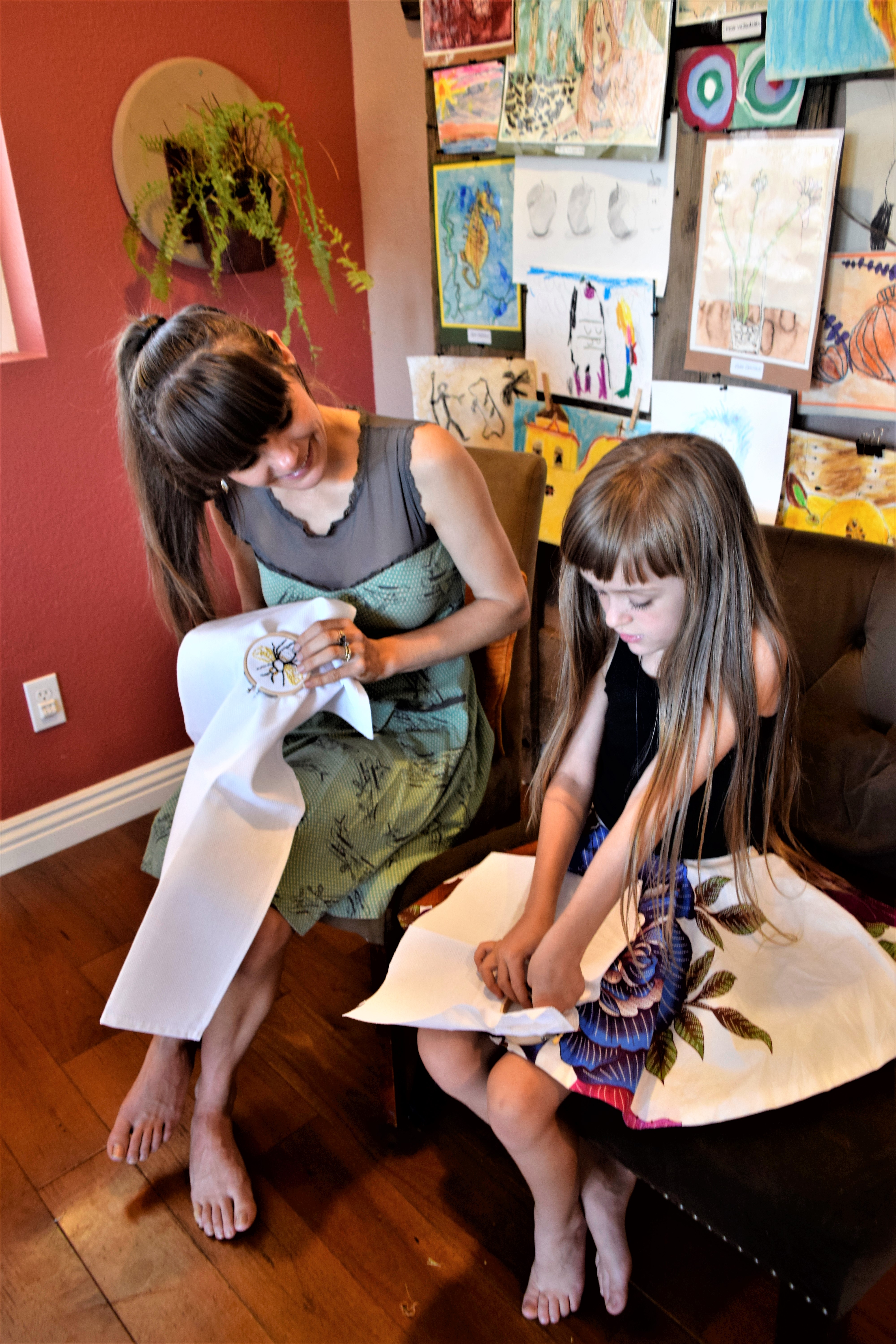
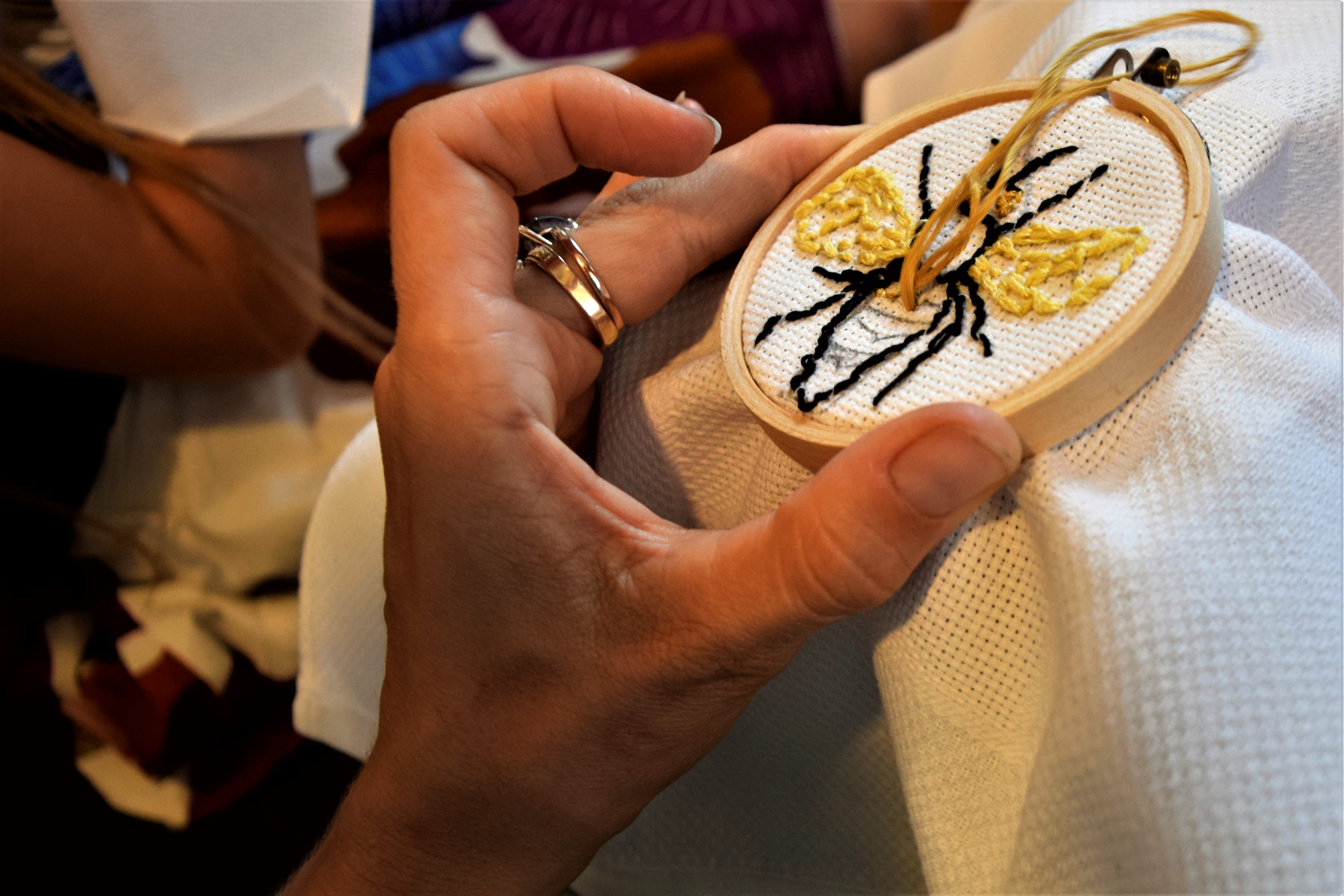
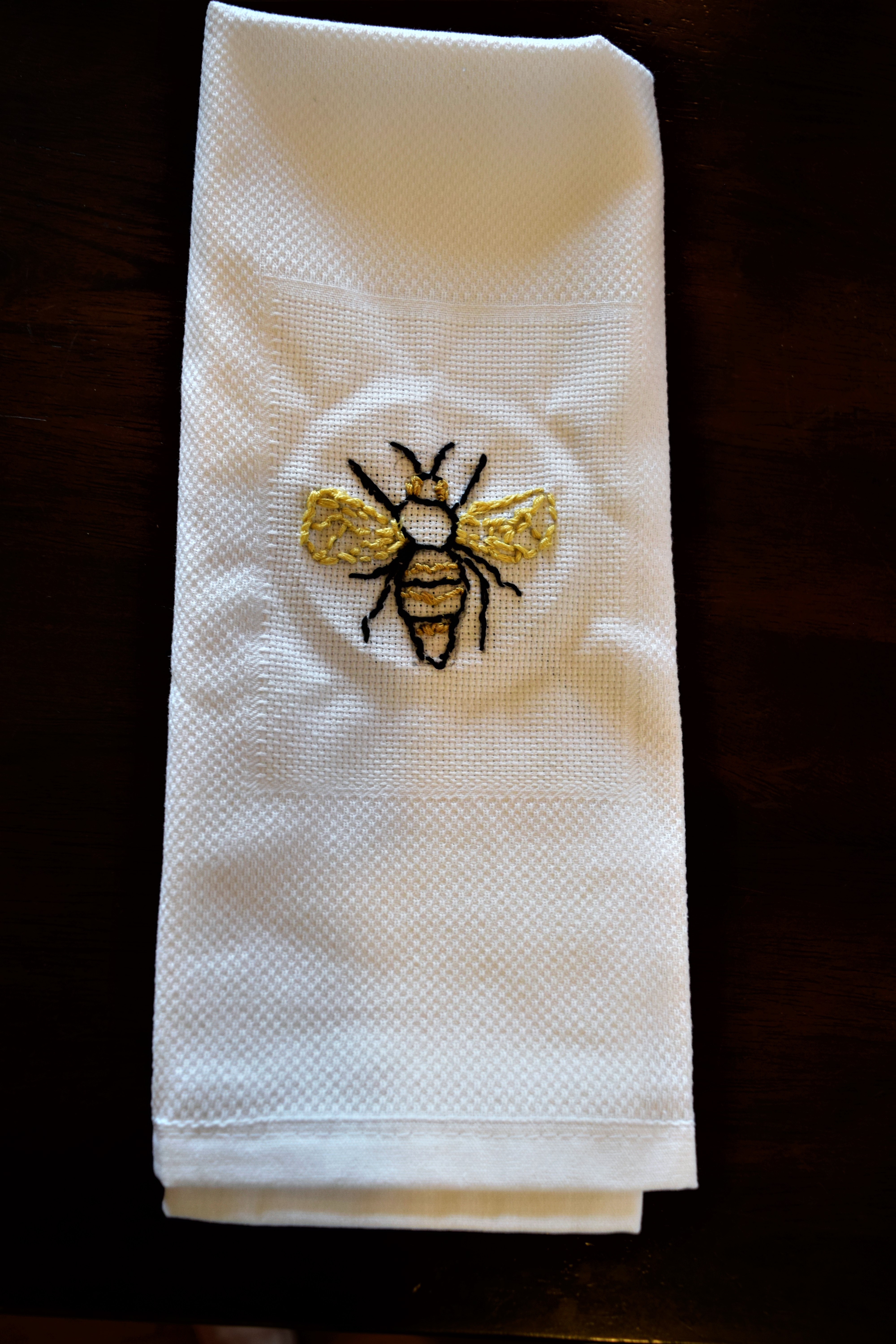
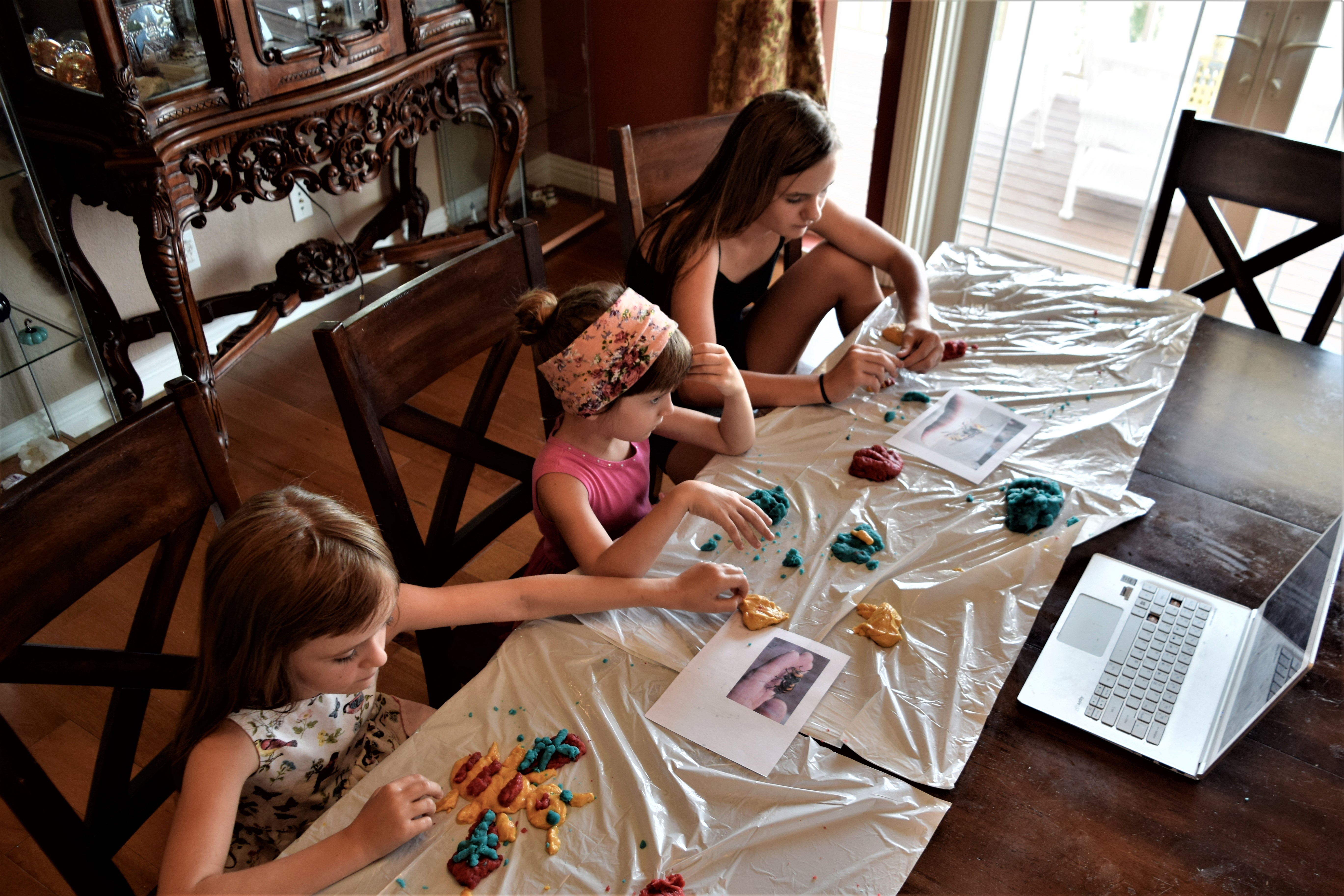
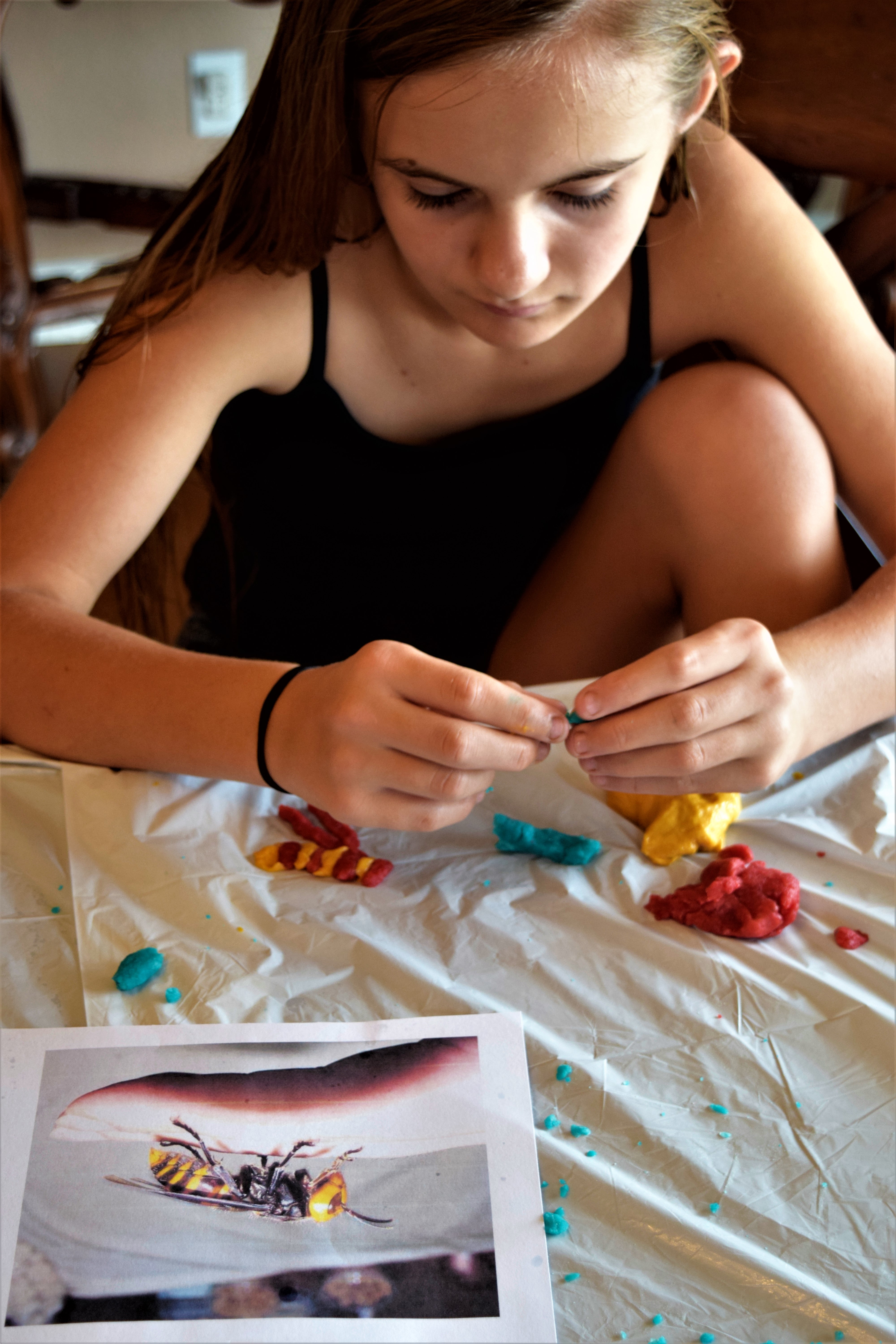
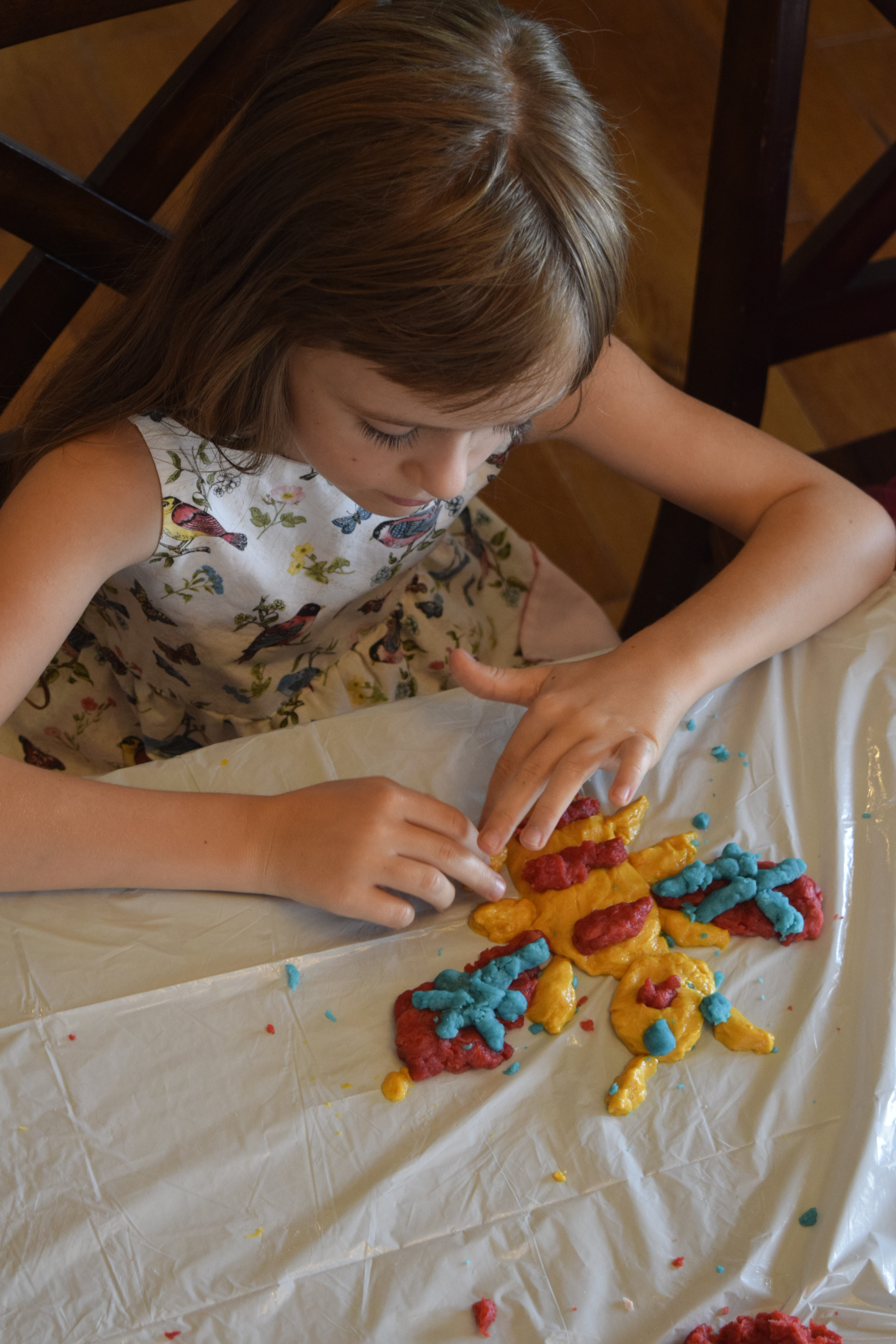
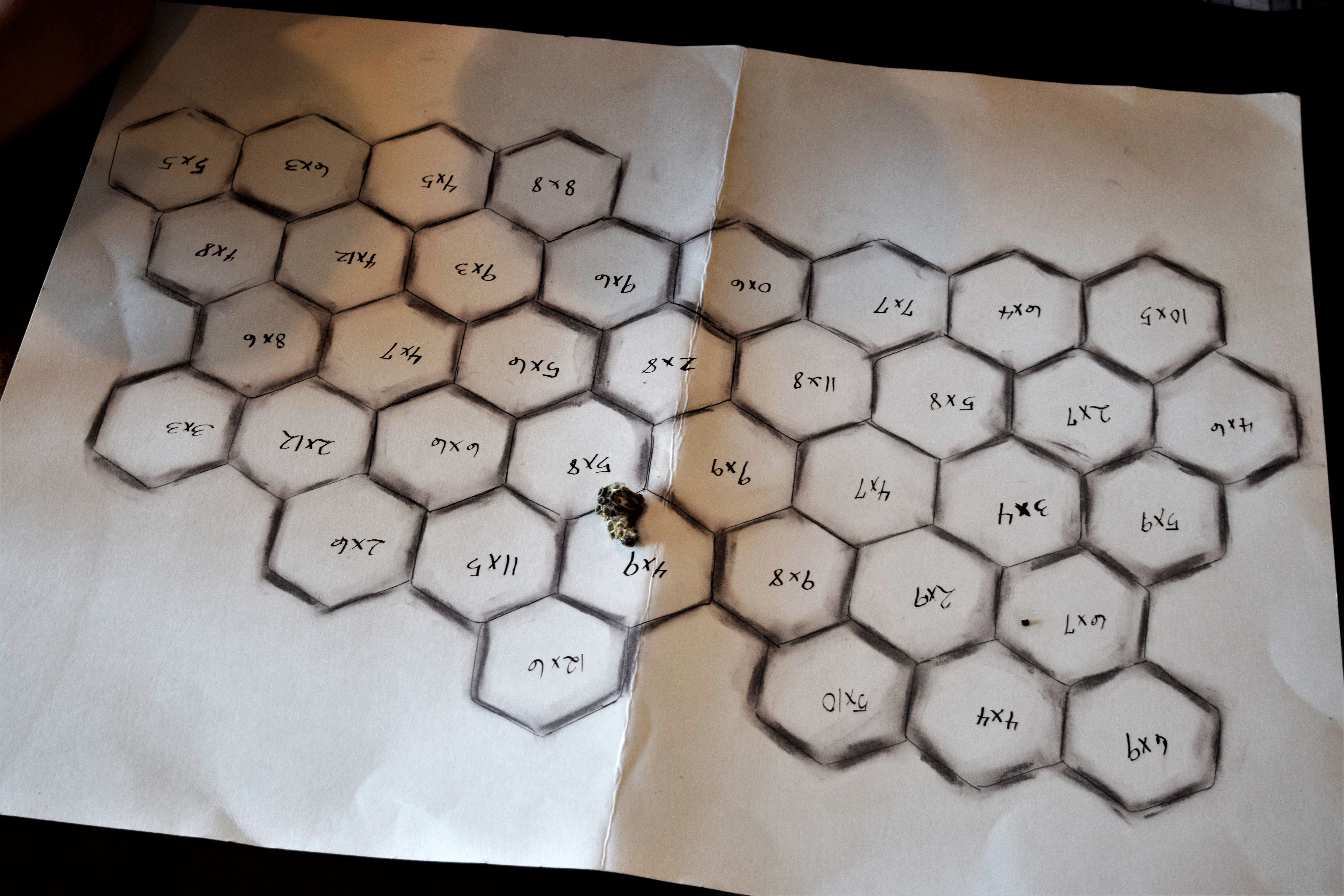
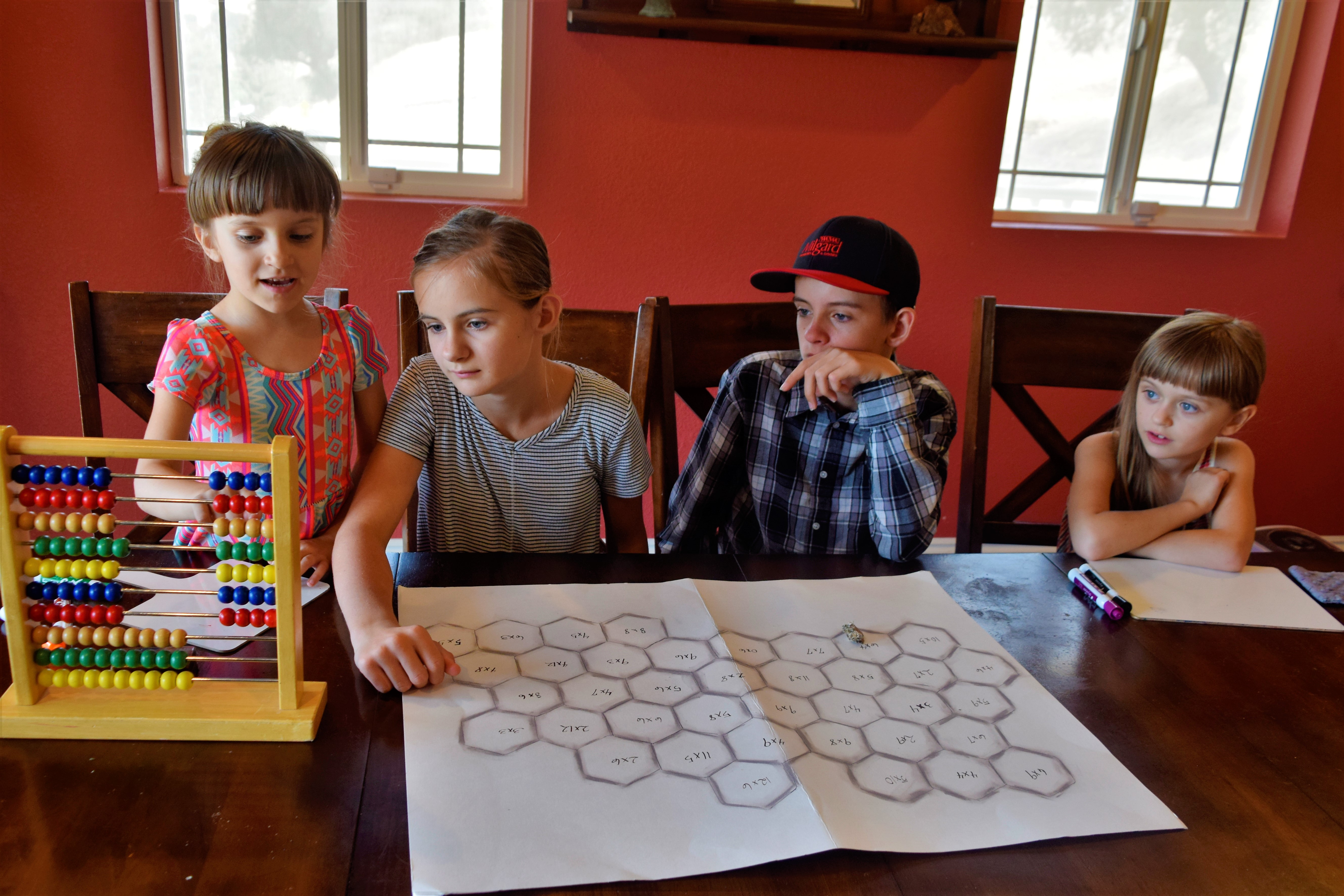
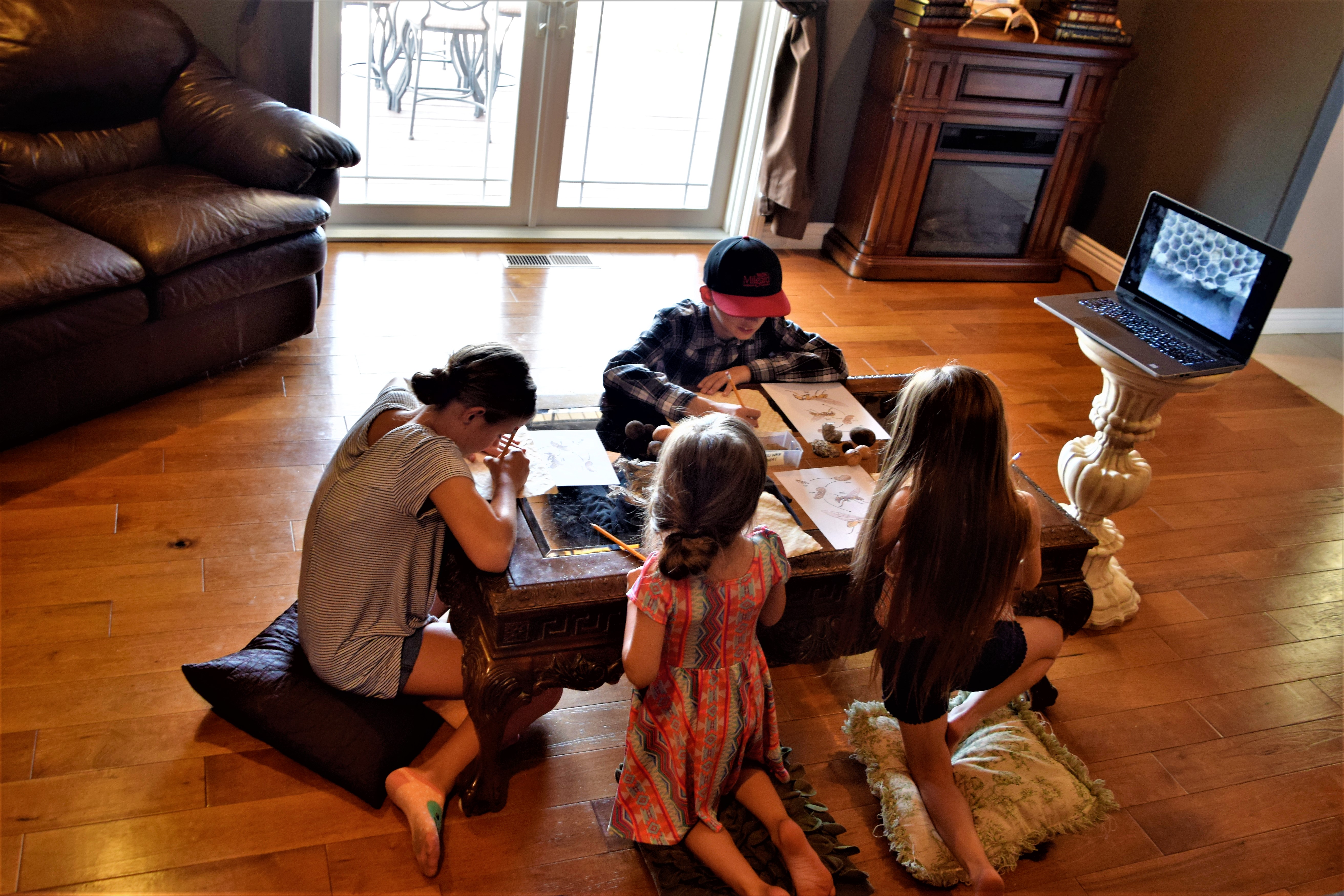
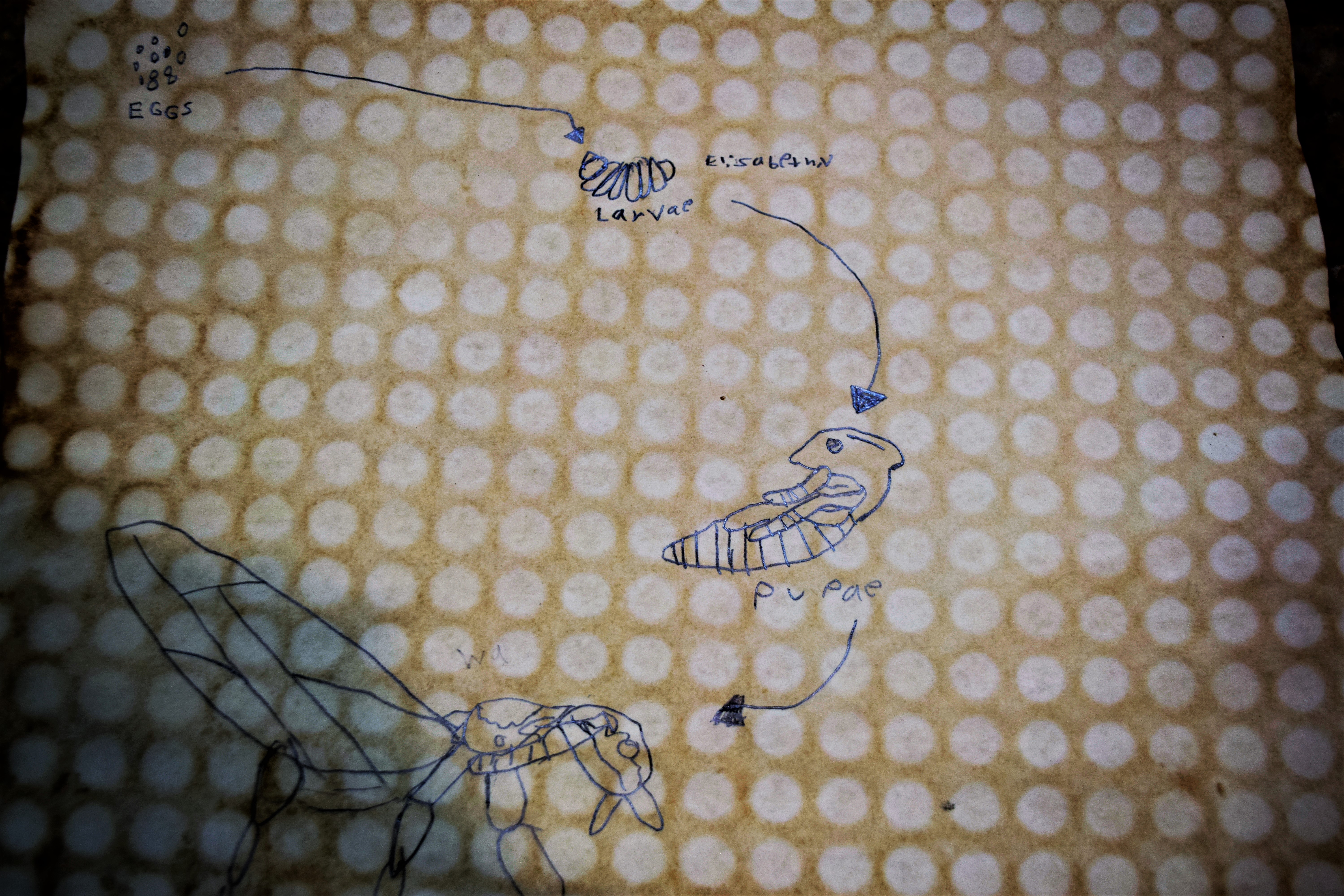
Joanna @ Everyday Made Fresh
I always love reading your posts! I love how you took something like a wasp and turned into a whole interest led lesson. What a great topic, and I enjoyed seeing all the activities that your kids did.
Brittany @ Everyday Thoughts
Wow, this is an amazing curriculum thank you so much for sharing! I really love the idea of candle making and I think that’s an activity my kids would enjoy.
Angela Tolsma
You are so brave catching a wasp nest. I so would not do that. I love candle making though! Haven’t done it in years!
Melissa Chapman
I am not a home school mother but I can see your students are learning and getting a great experience. The artwork and embroidery are so well done.
Alyssa N Zapinski
Outside of the fact that I hate wasps and bees and anything that could sting me, this is a cool project. I was homeschooled from 8-12th grade and we always had the opportunity to do something cool as an assignment either on our own or through co-op courses.
Akim
Unique way to let the kids learn! These activities are great. I’ll share this blog to my mom
Chel
Wow! This is some serious dedication! You should probably be a teacher with all of this passion for teaching in a hands-on and creative way. I definitely don’t have the energy, patience, or ideas for it! What you’re doing is beautiful.
Cindy Ingalls
I’m terrified of bees and wasps so I don’t know if I would be brave enough to observe their behaviors. I give you credit for turning this experience into a great teachable moment.
Nikki
Thank you for sharing your how you do your unit studies!
Ayana Pitterson
I don’t think I ever knew half of the stuff about wasps until I ready this post. The most I would say that I simply wanted not to interfere with them and hope they did not interfere with me. But, this post was very enlightening. Very cool to have the kids learn about it so hands on. Definitely will give them a different perspective when they encounter them again.
Thrifting Diva
Amber Nelson
What an awesome educational experience! I think this is super! Hands on is the way my family learns est.
Angela Ricardo Bethea
I am totally amaze how they are not scared of the wasp! I was terrified of having them in our home. I just know wasp are like bees.
Sylvia
You are one brave mama! It is fascinating that you were able to create so many activities around a wasp nest, that most people would consider a nuisance and get rid of immediately. I don’t think I will ever look at figs the same way again!
Trisha
I love reading your posts! This one in particular I wasn’t so sure I could hang with because I have a fear of wasps, but you did such a great job with this! So many creative ways to make learning about wasps fun!